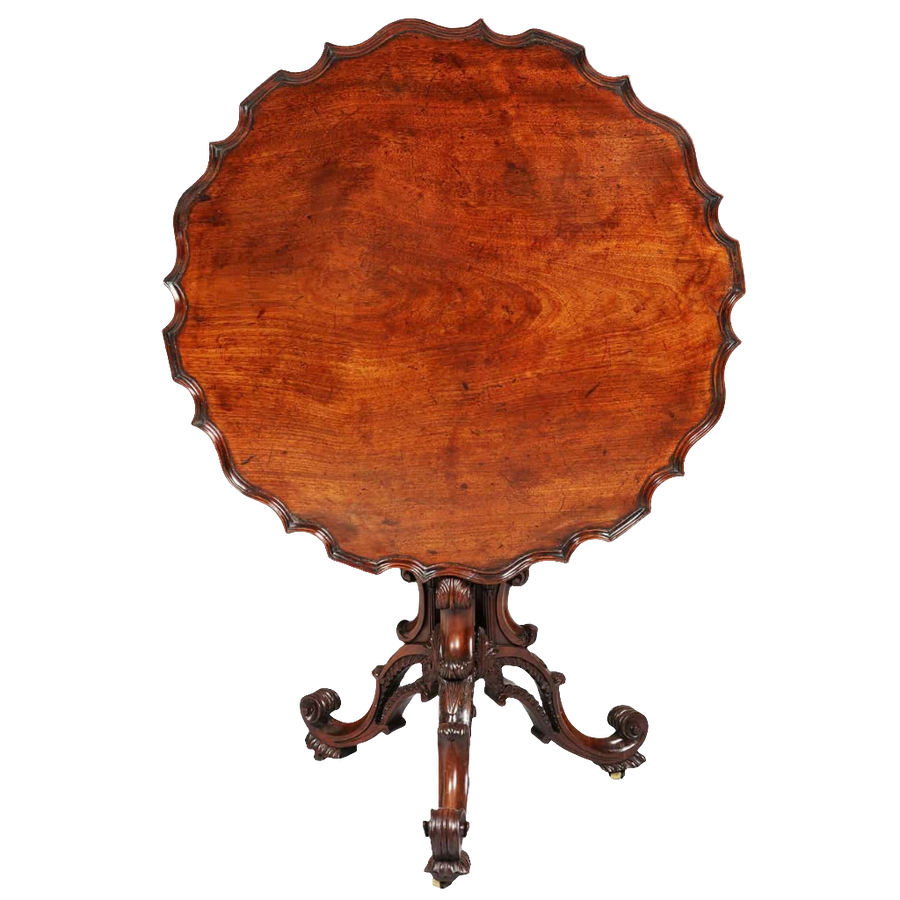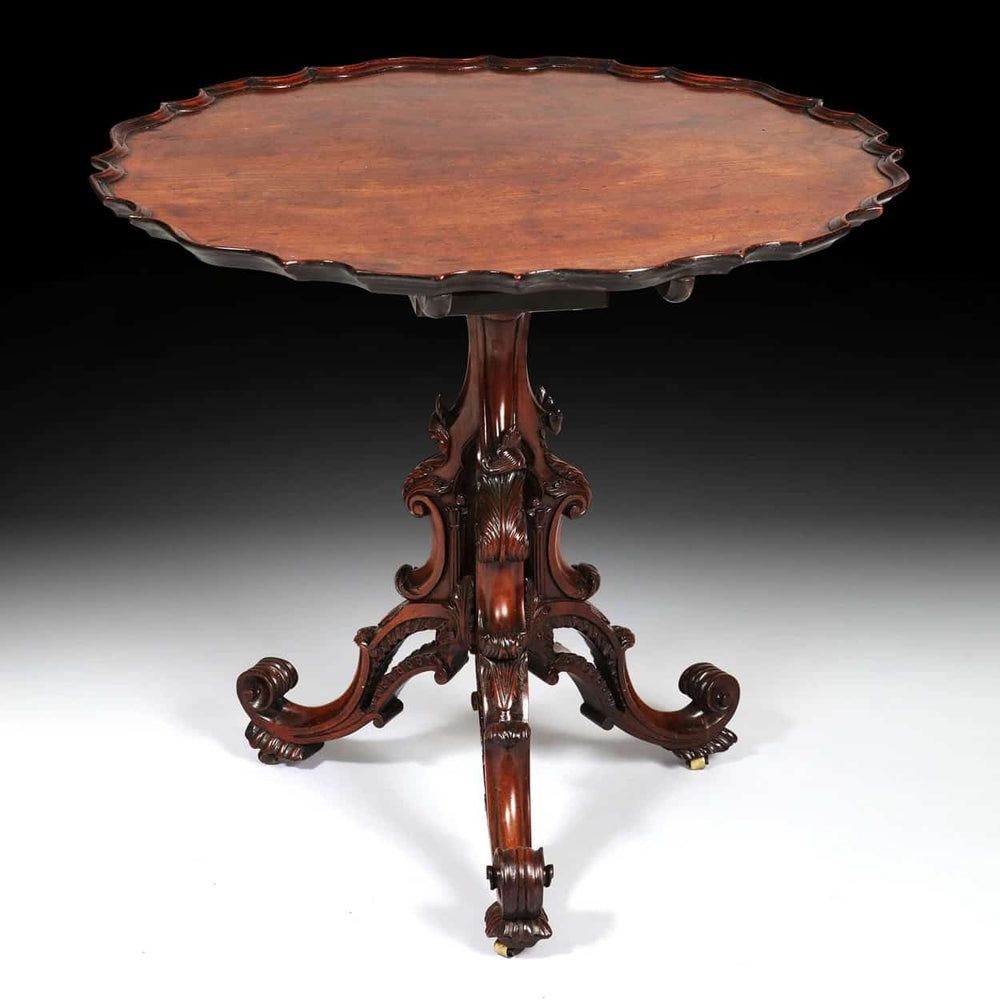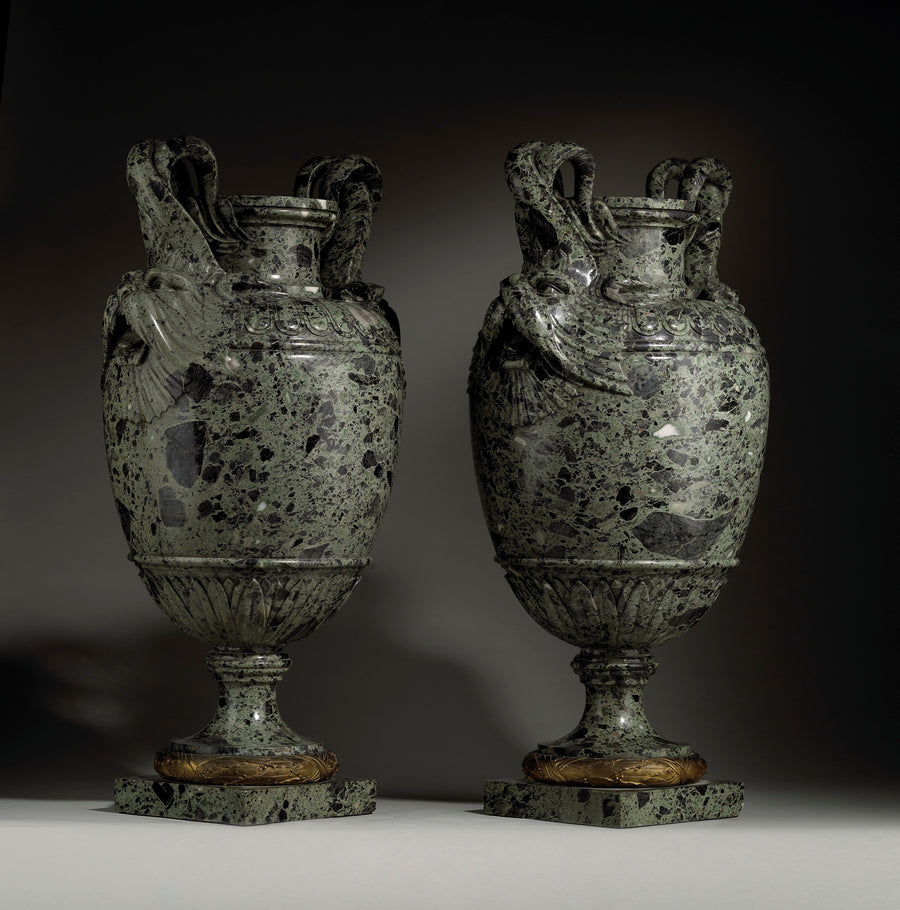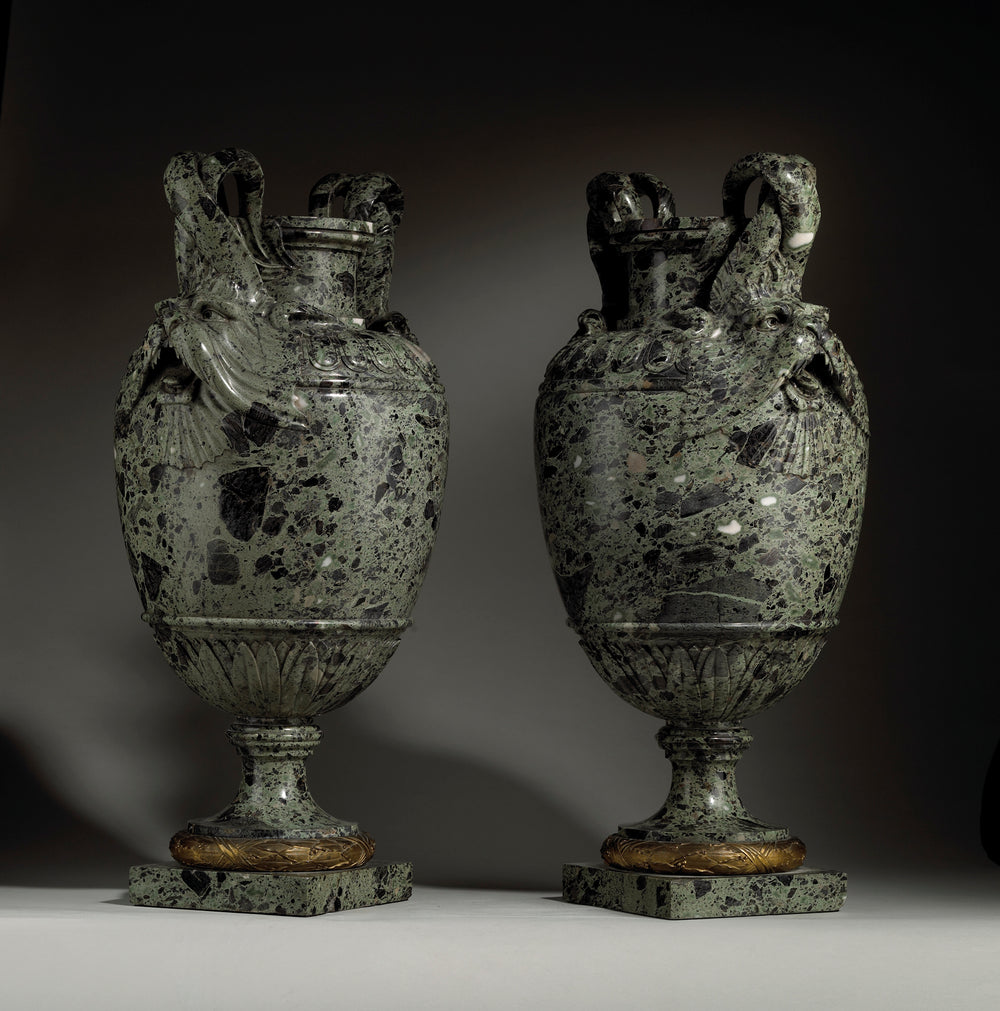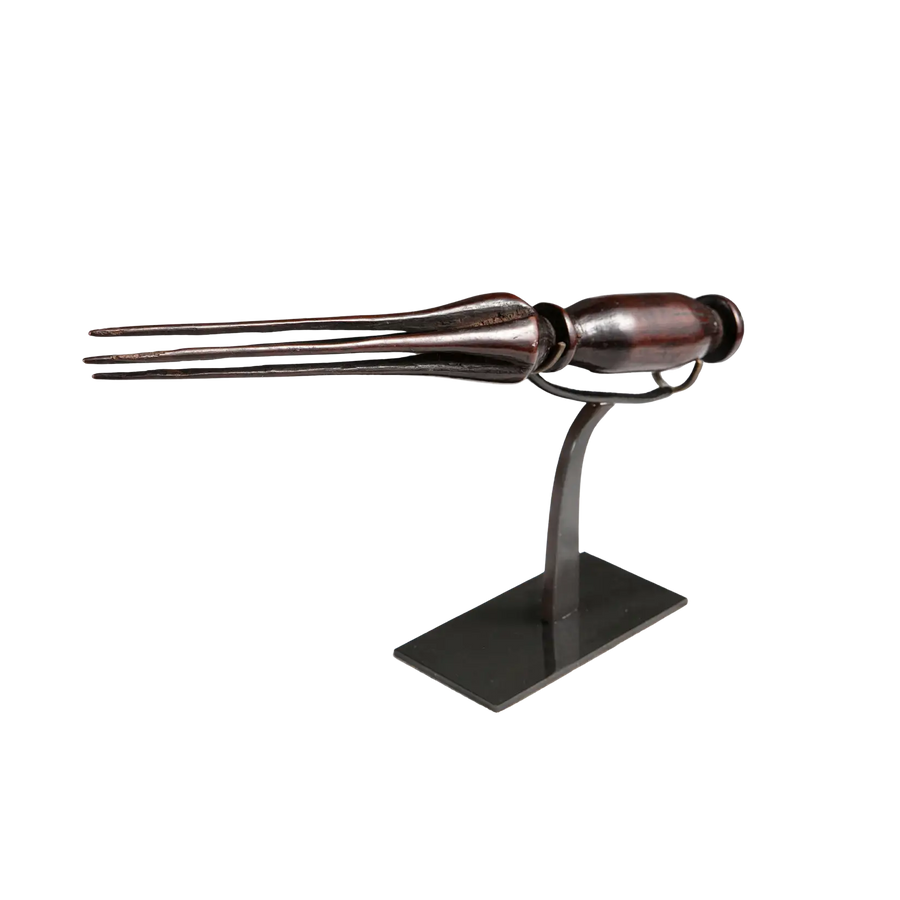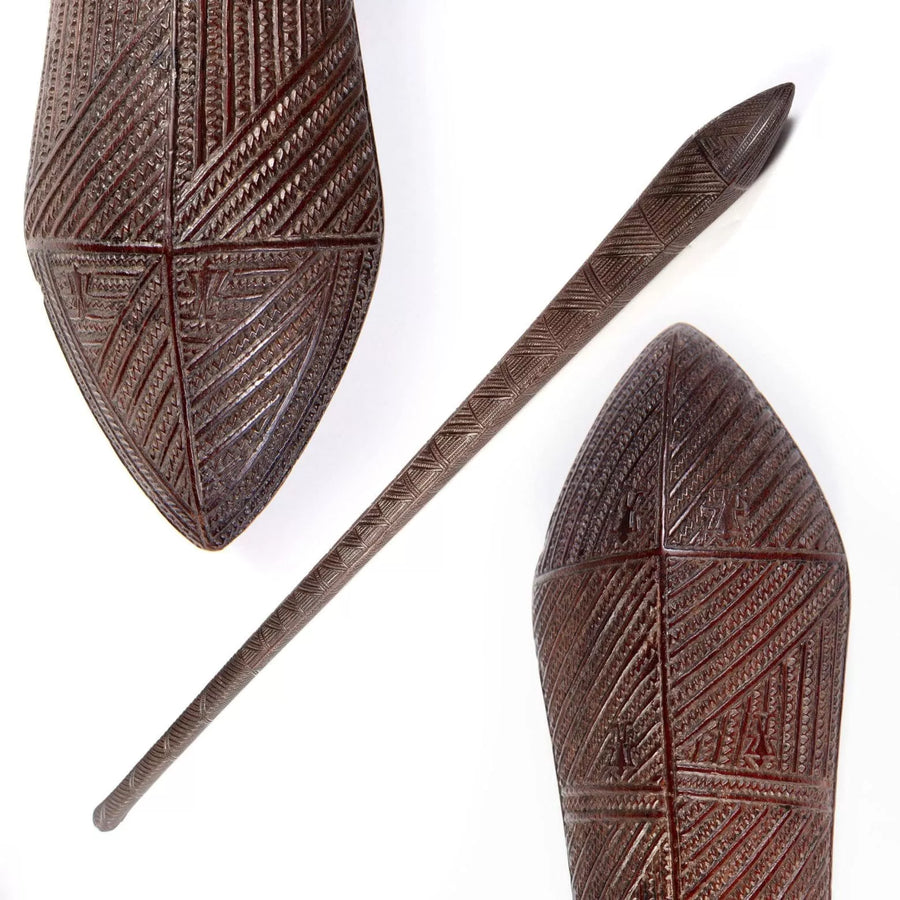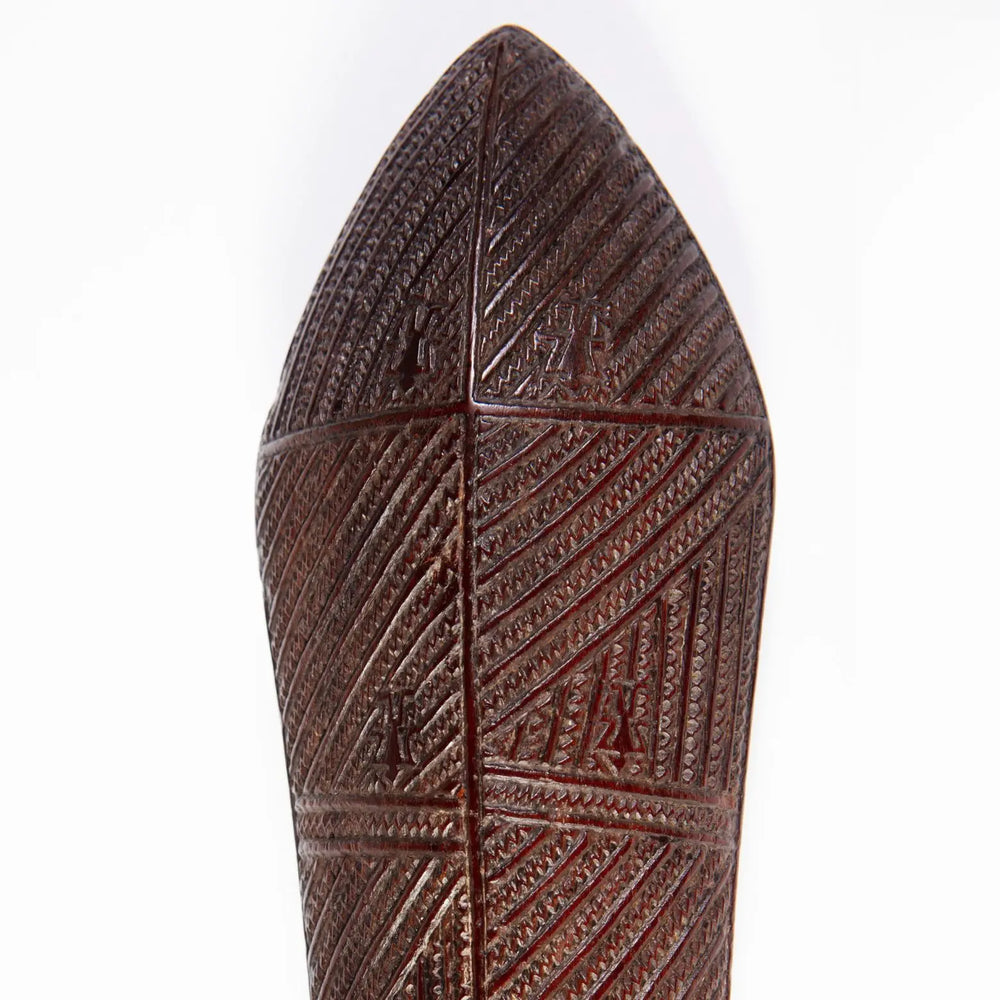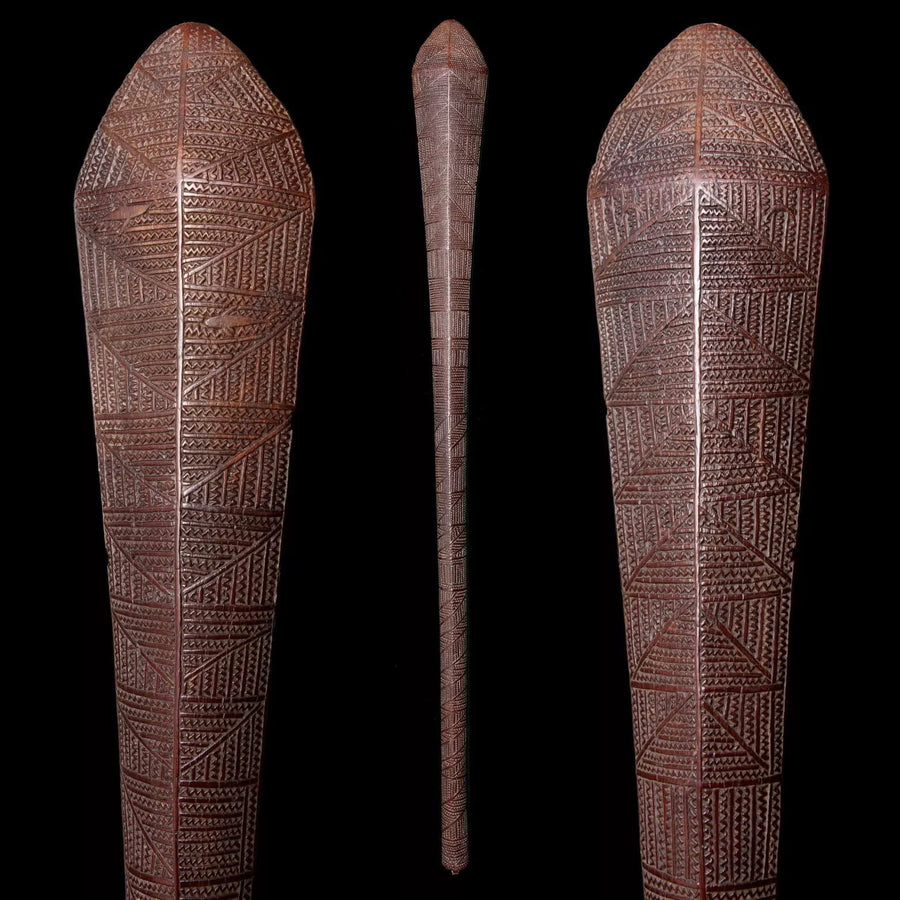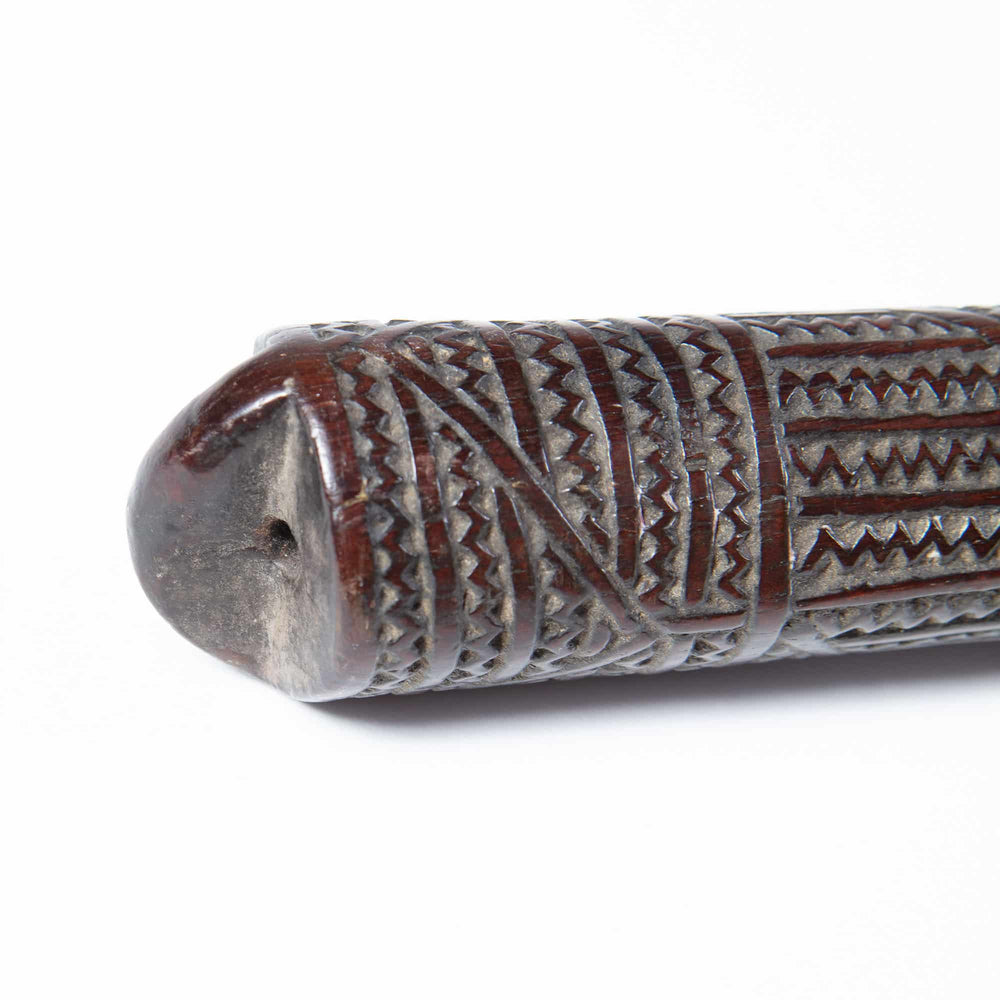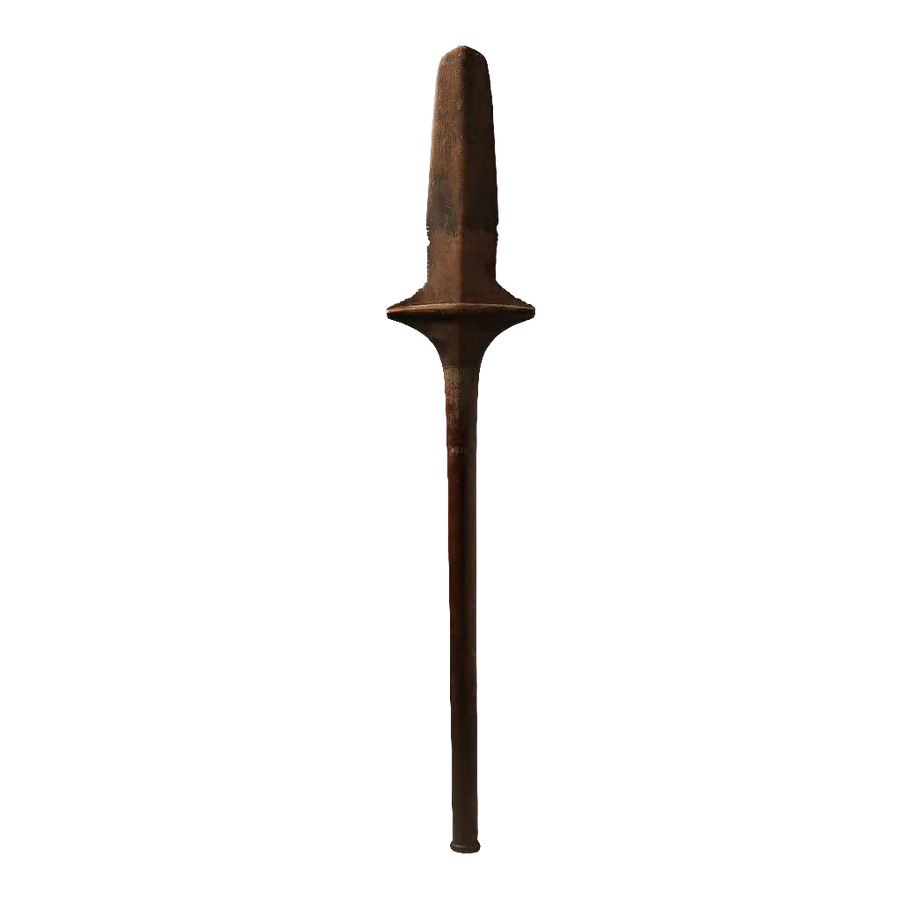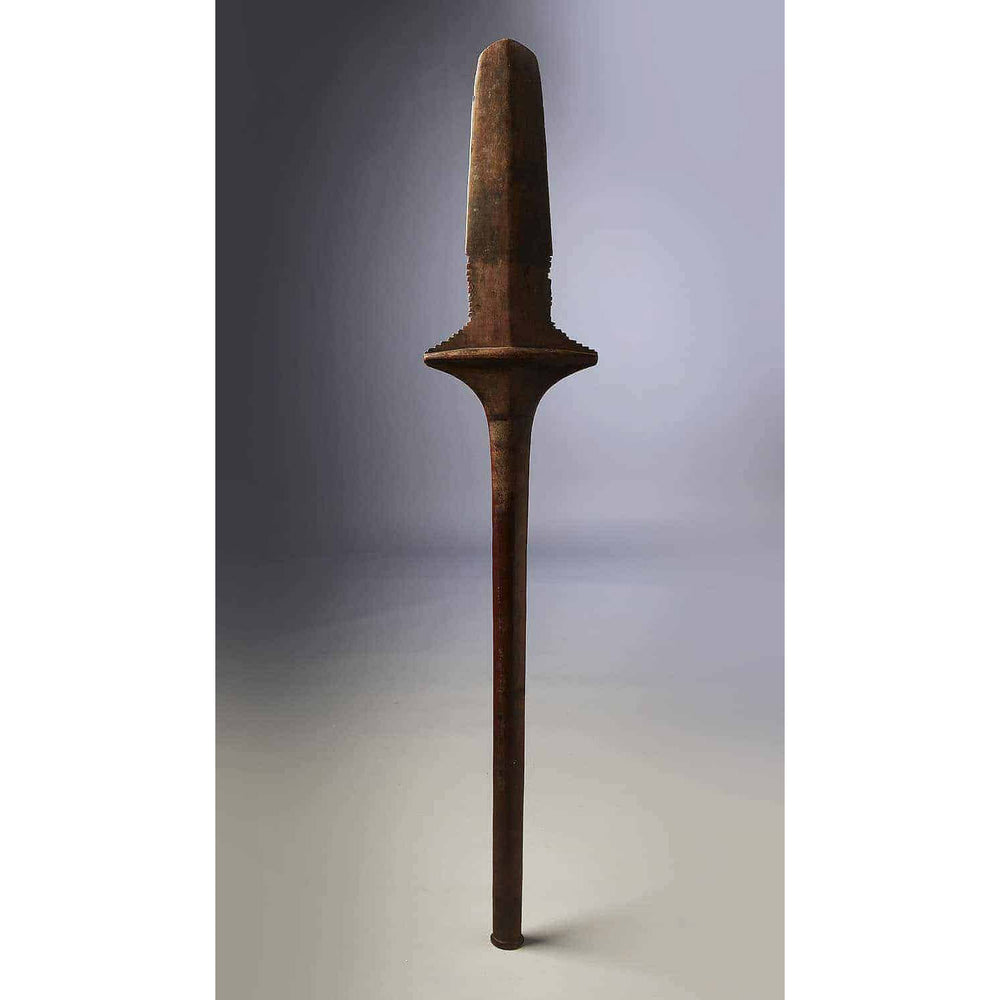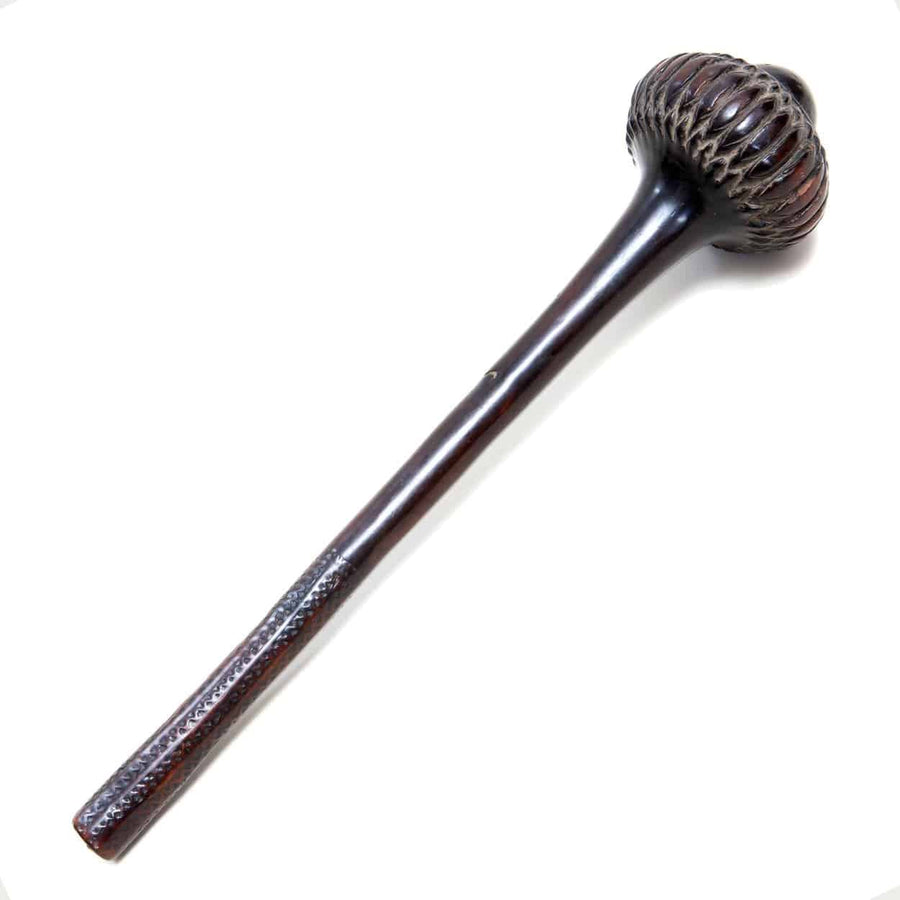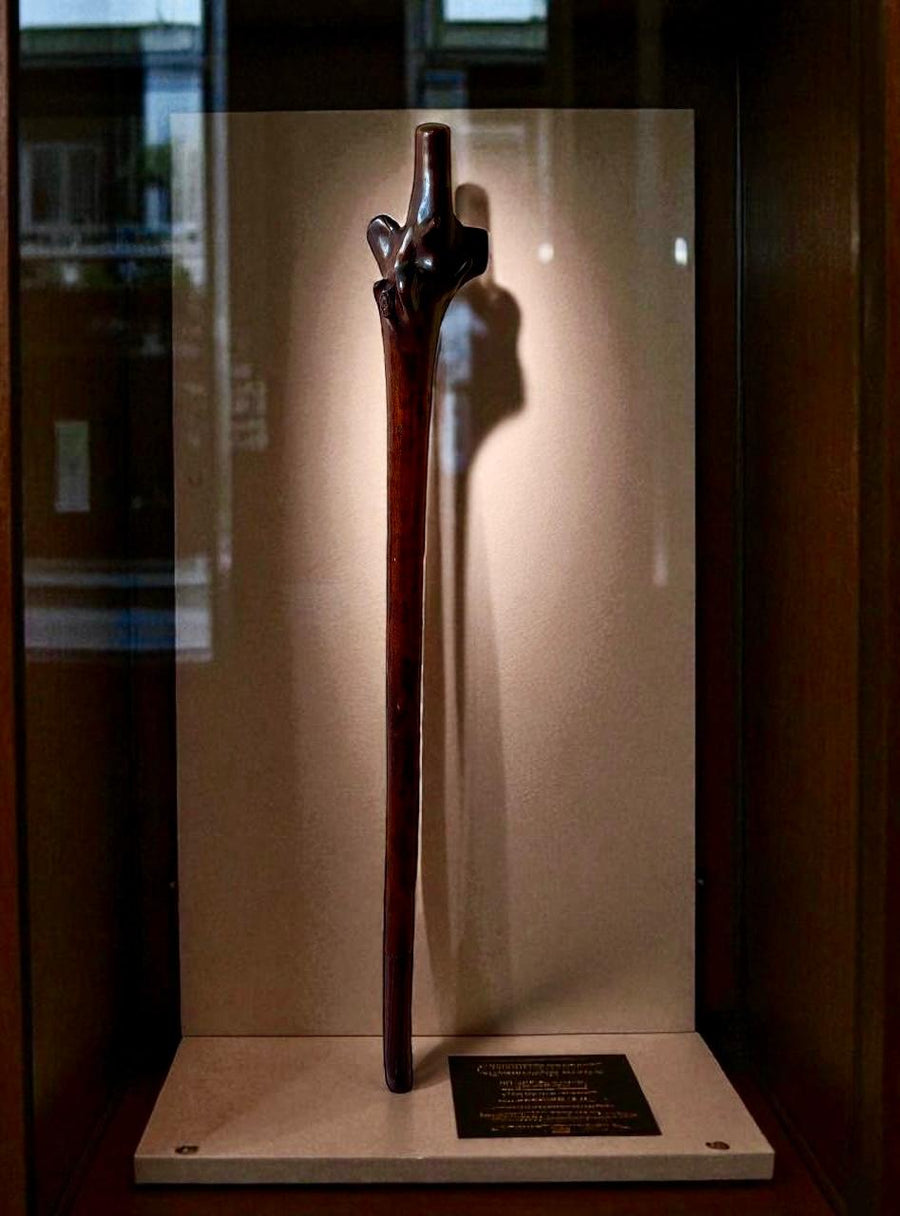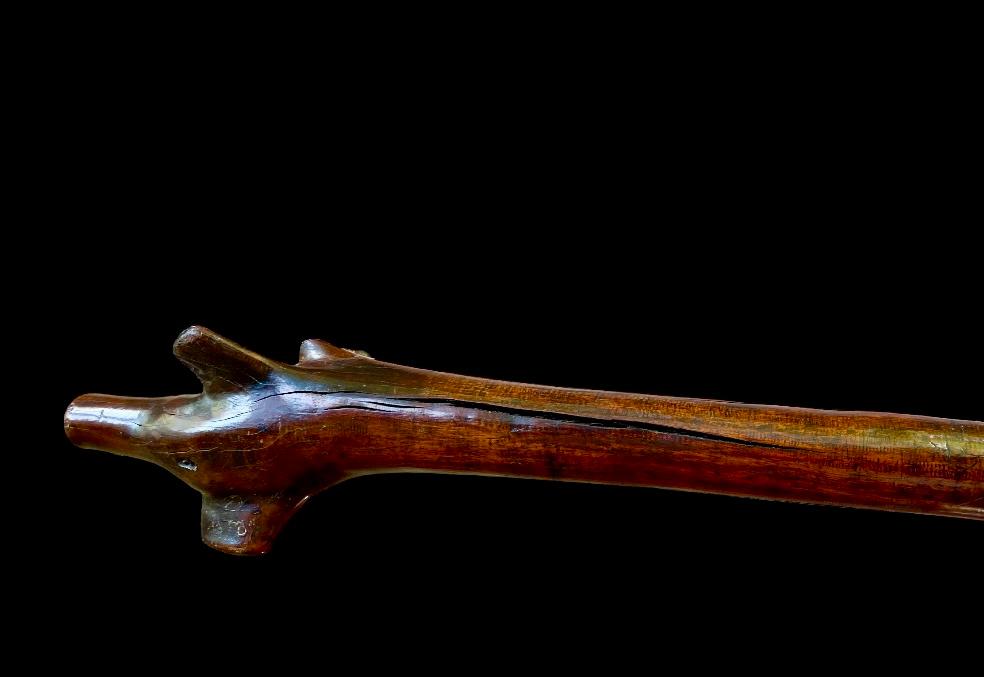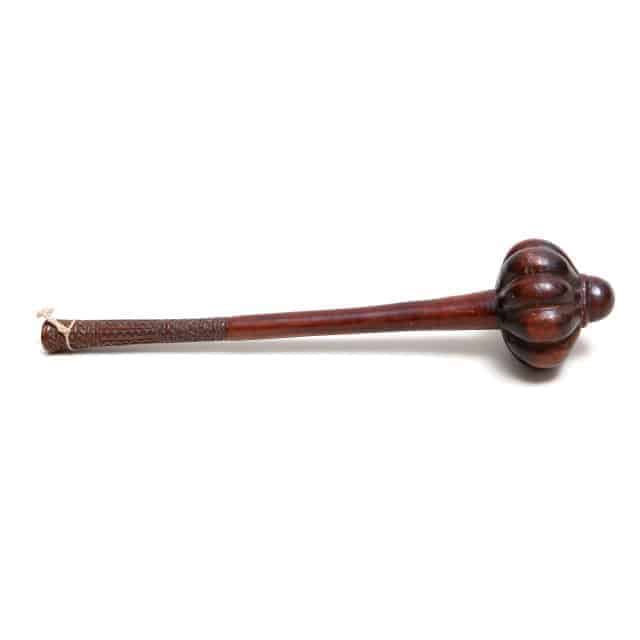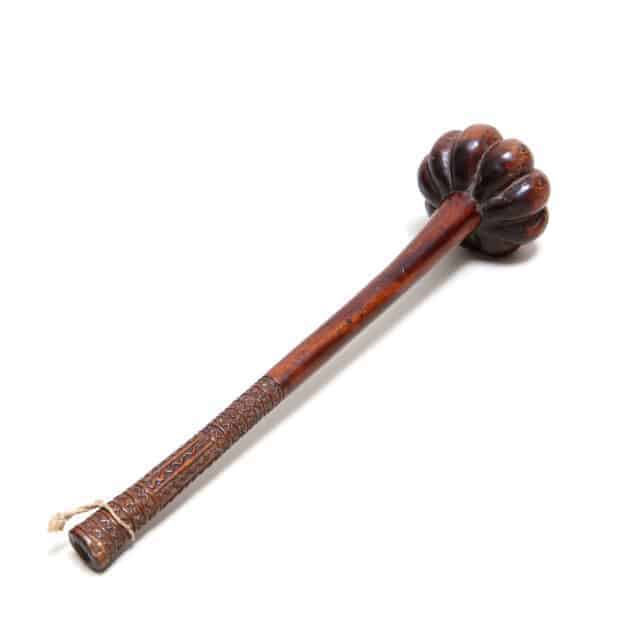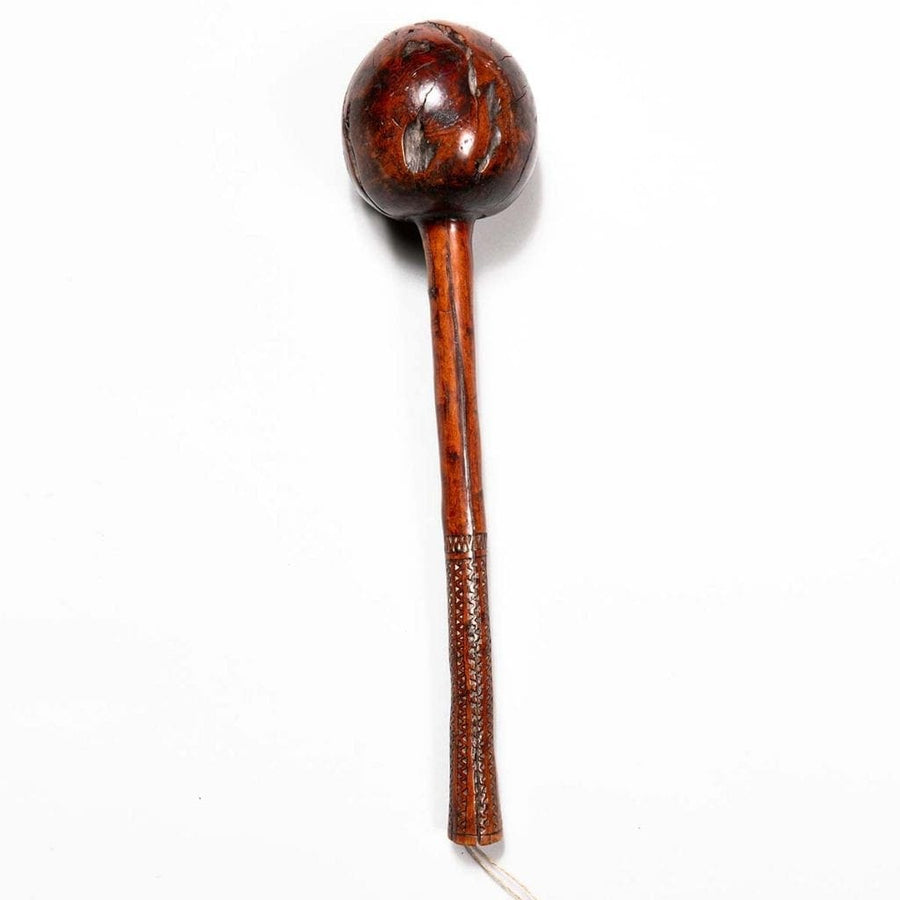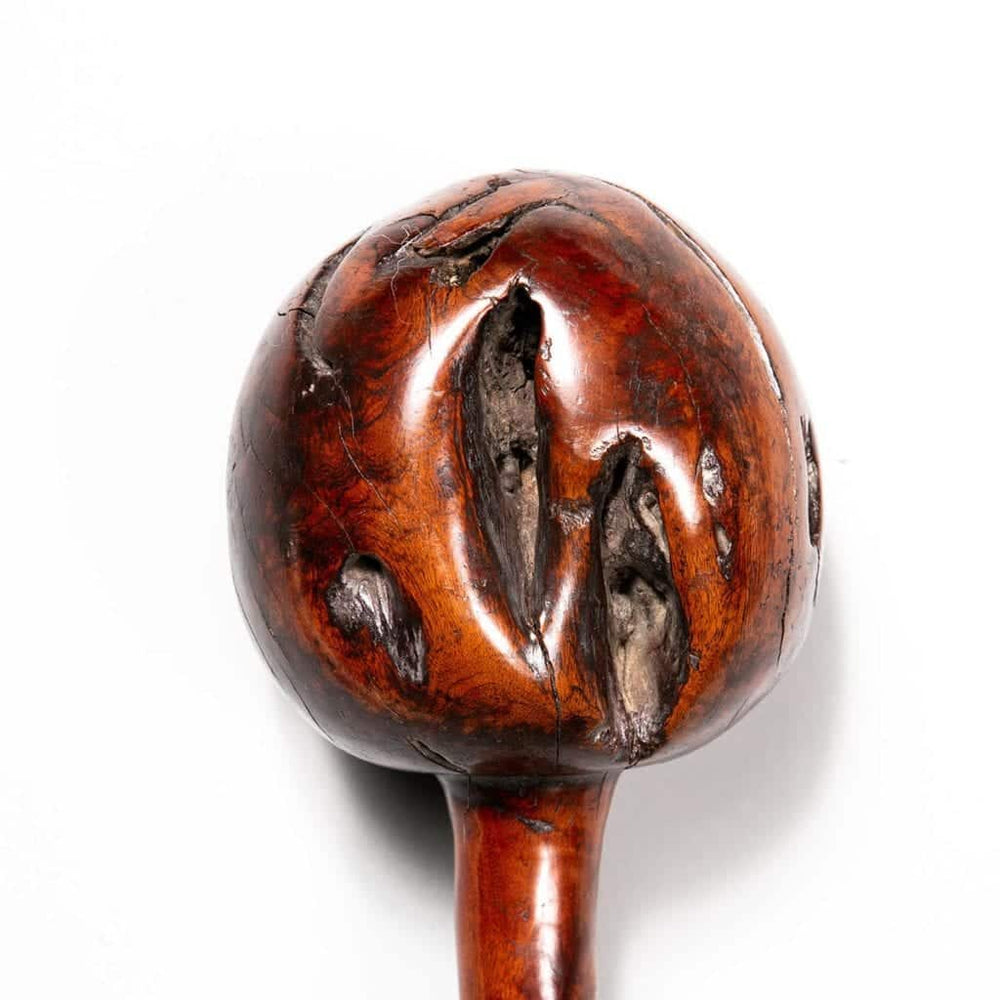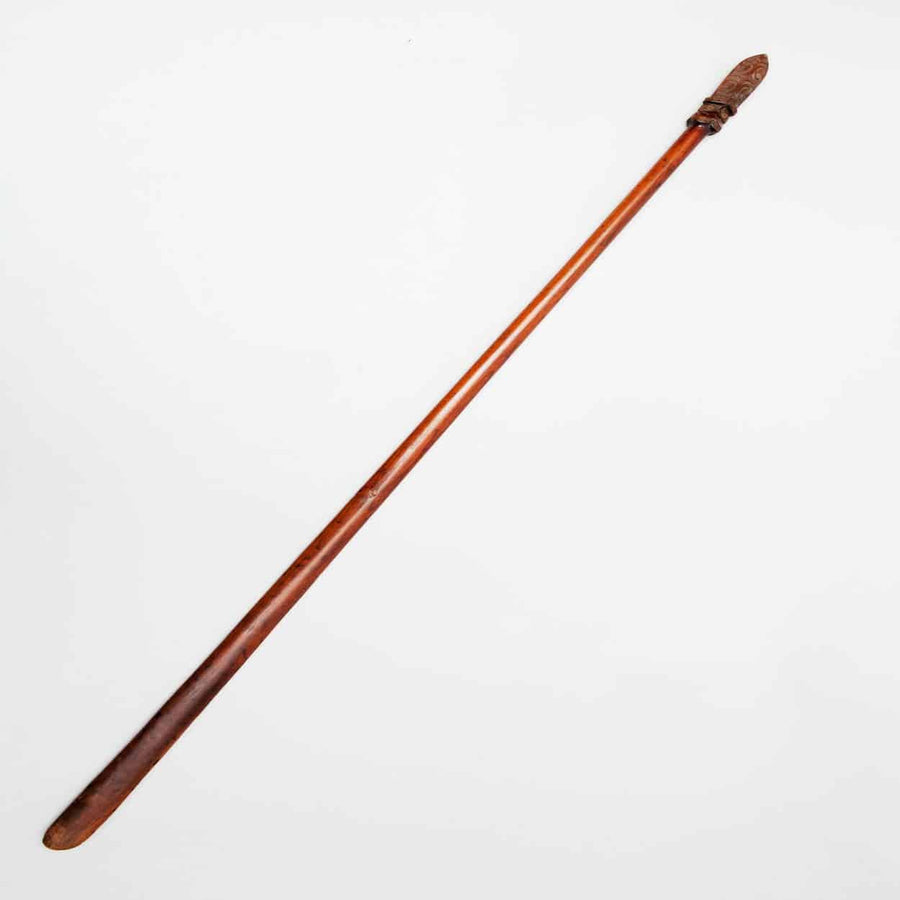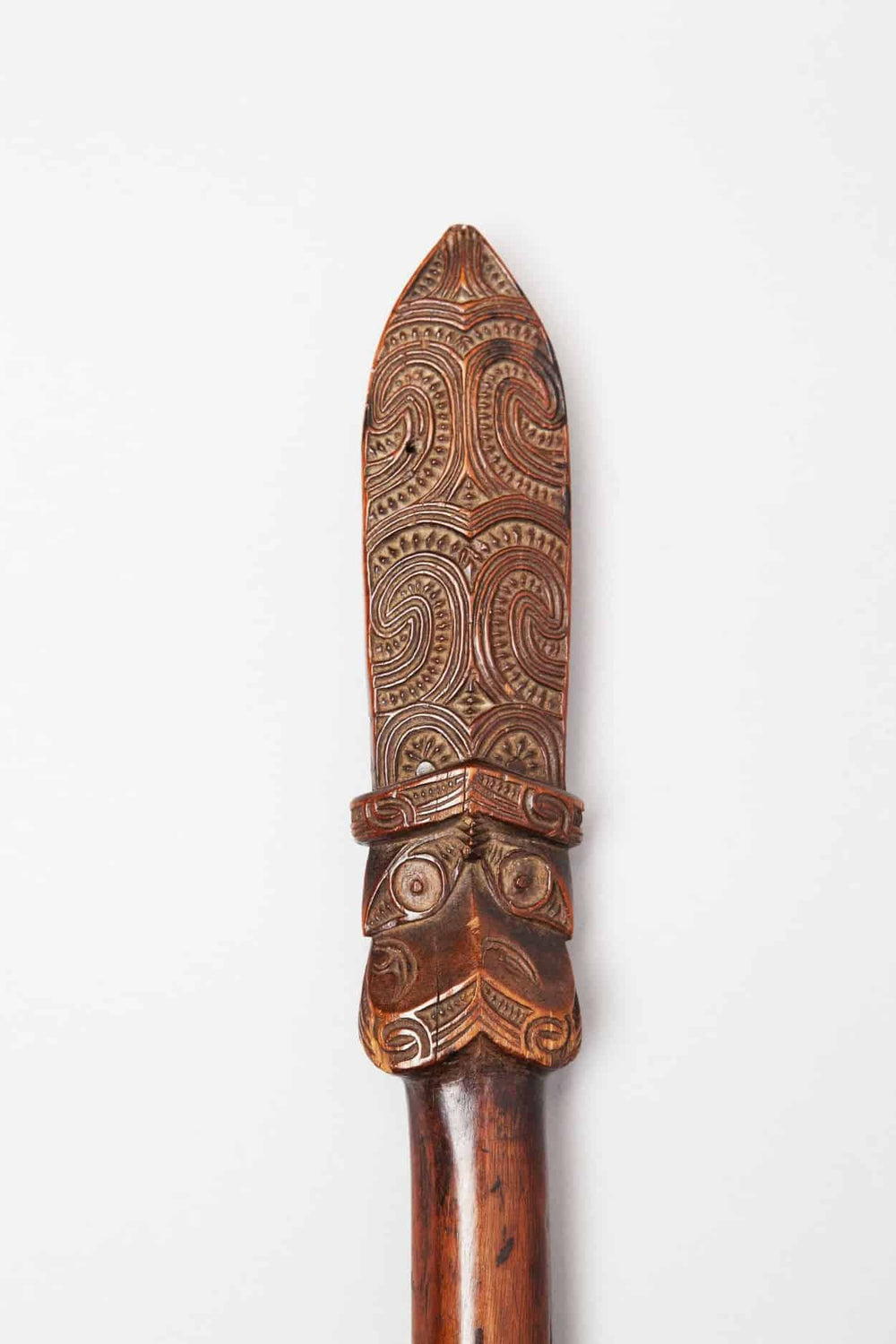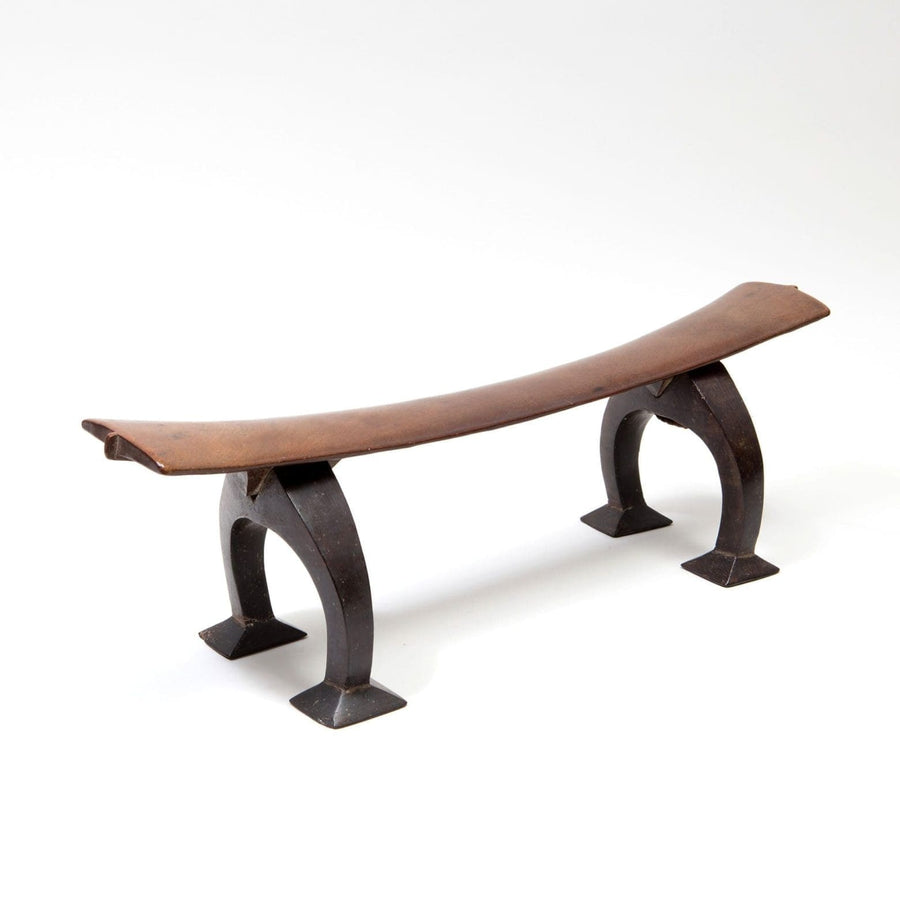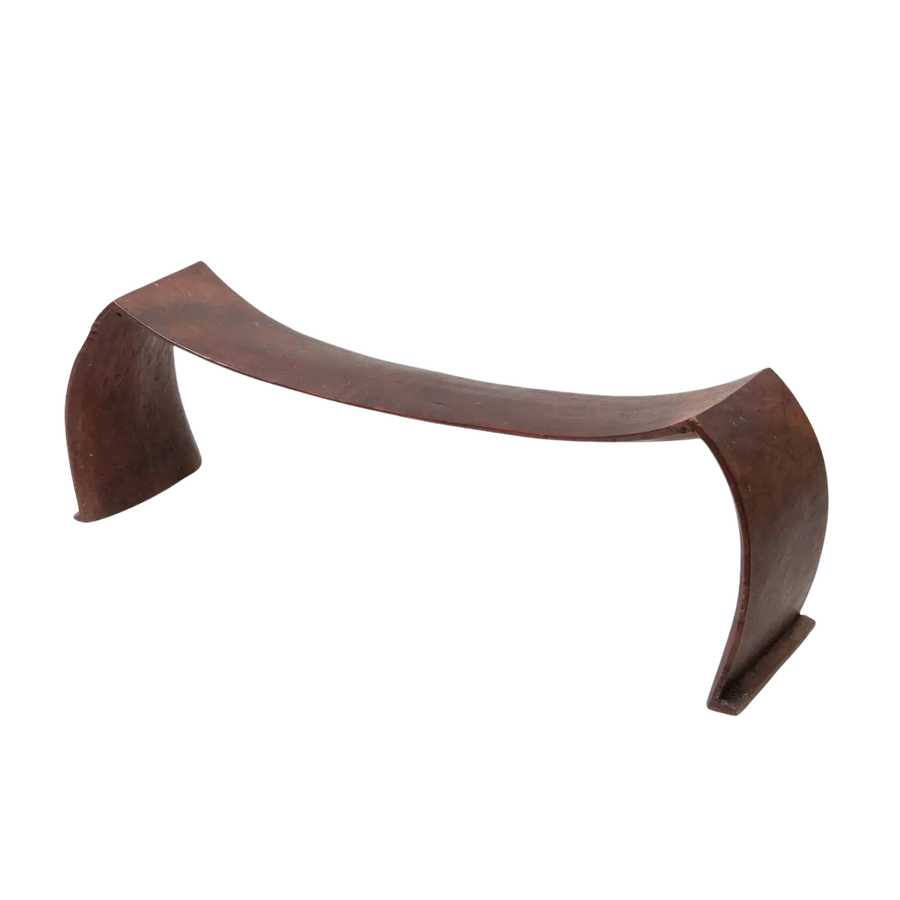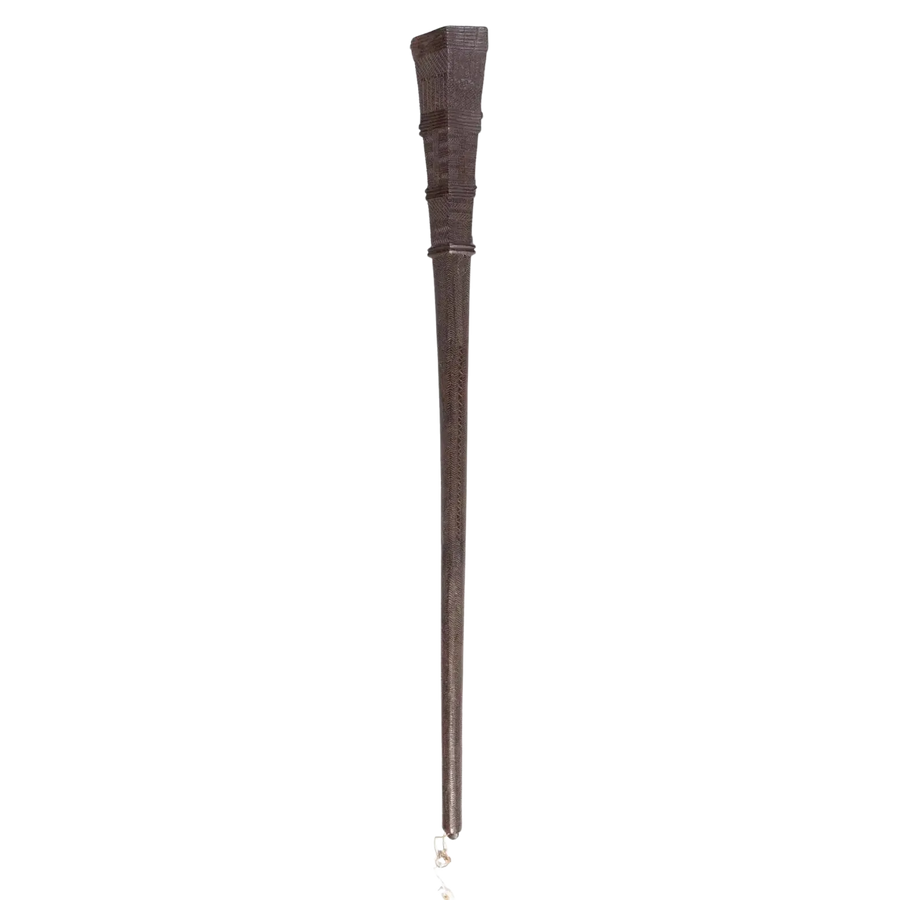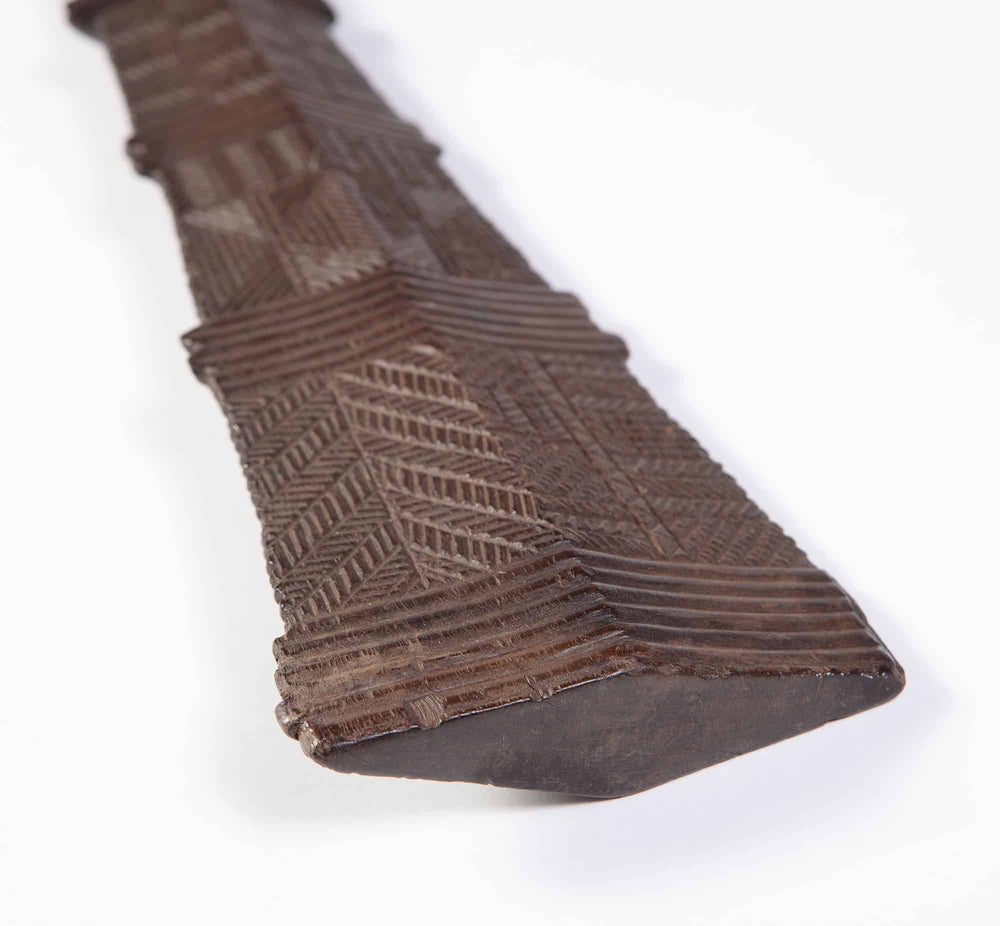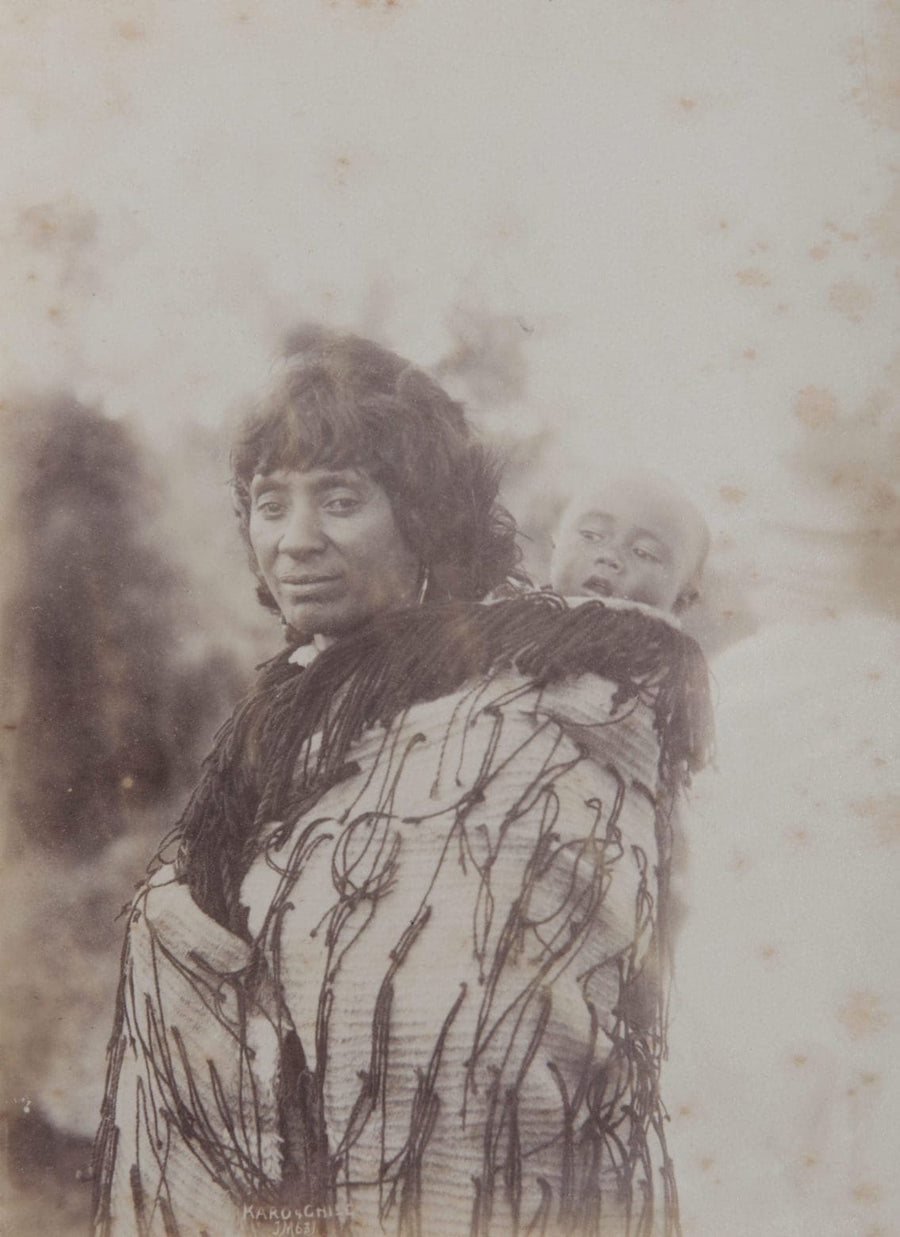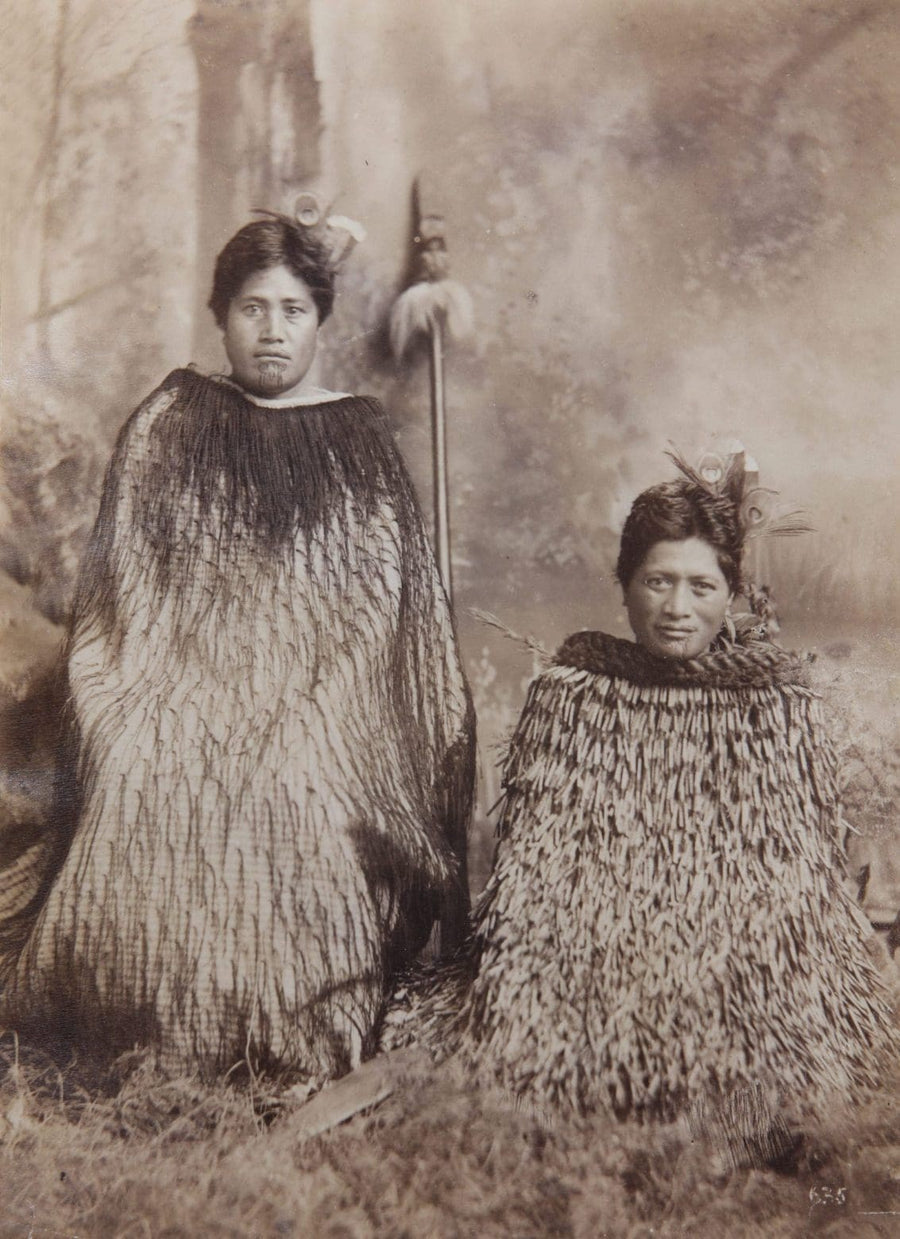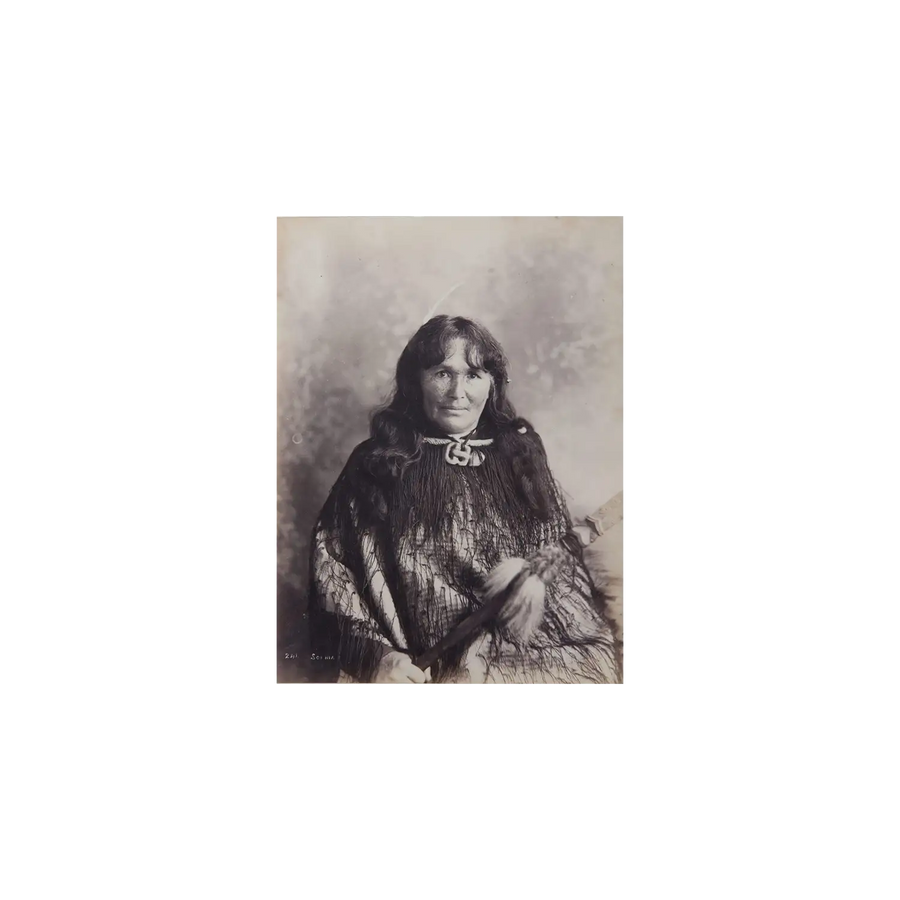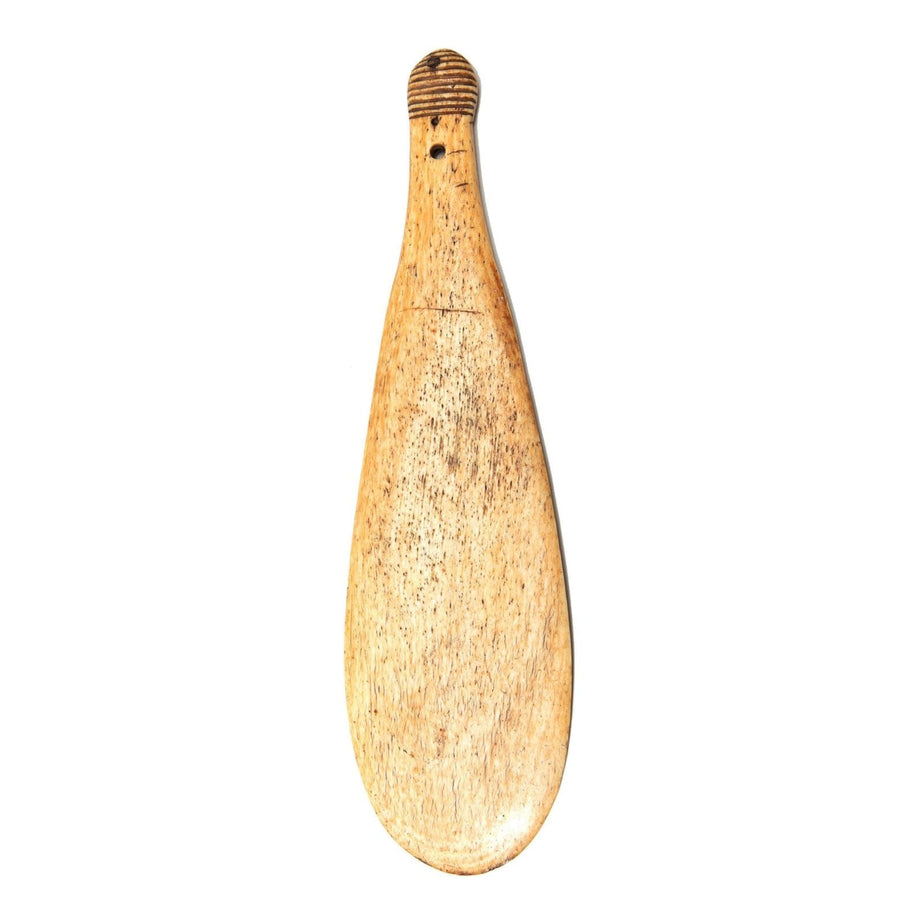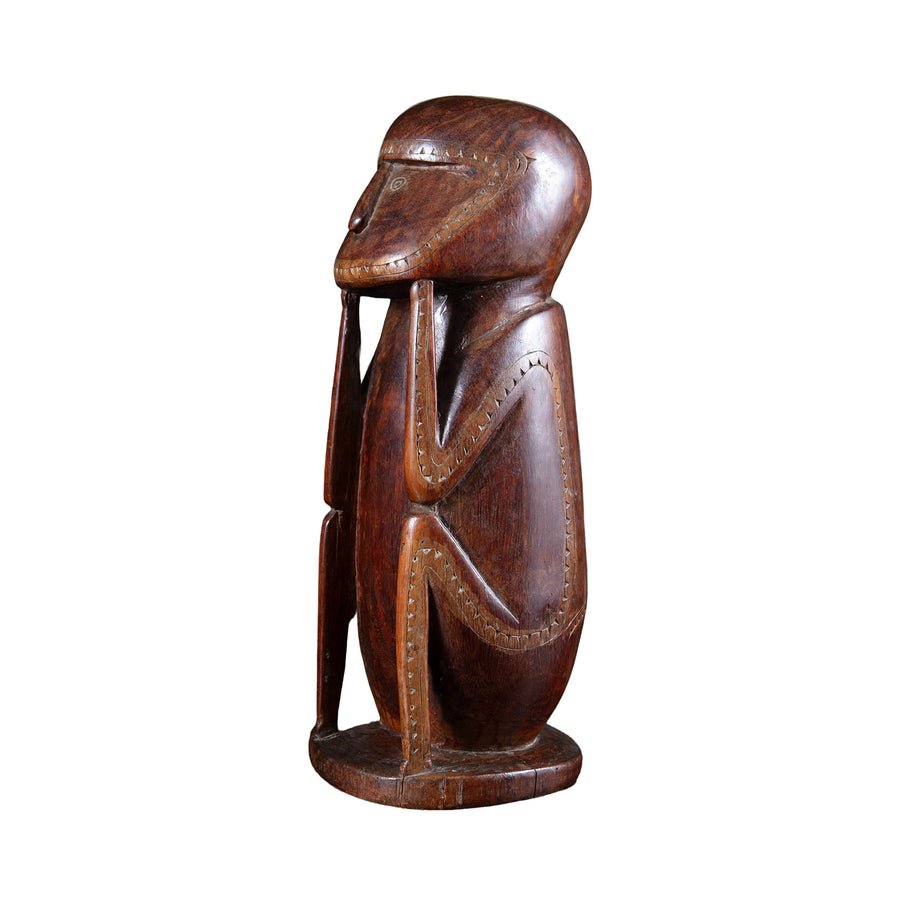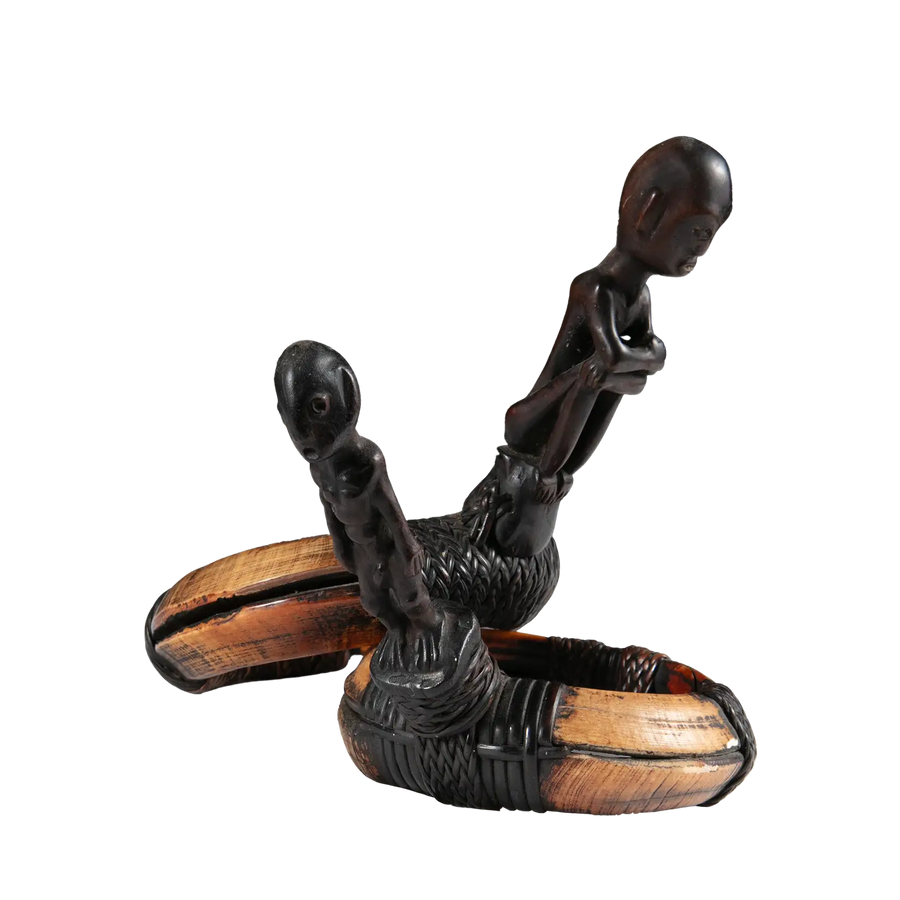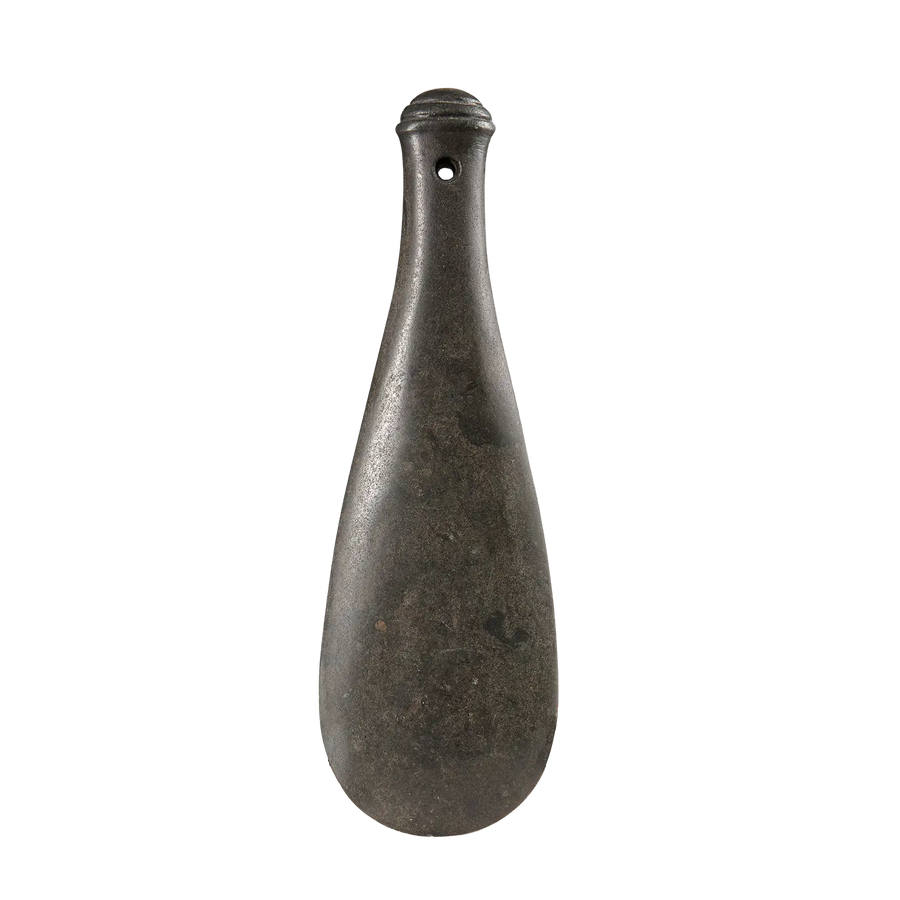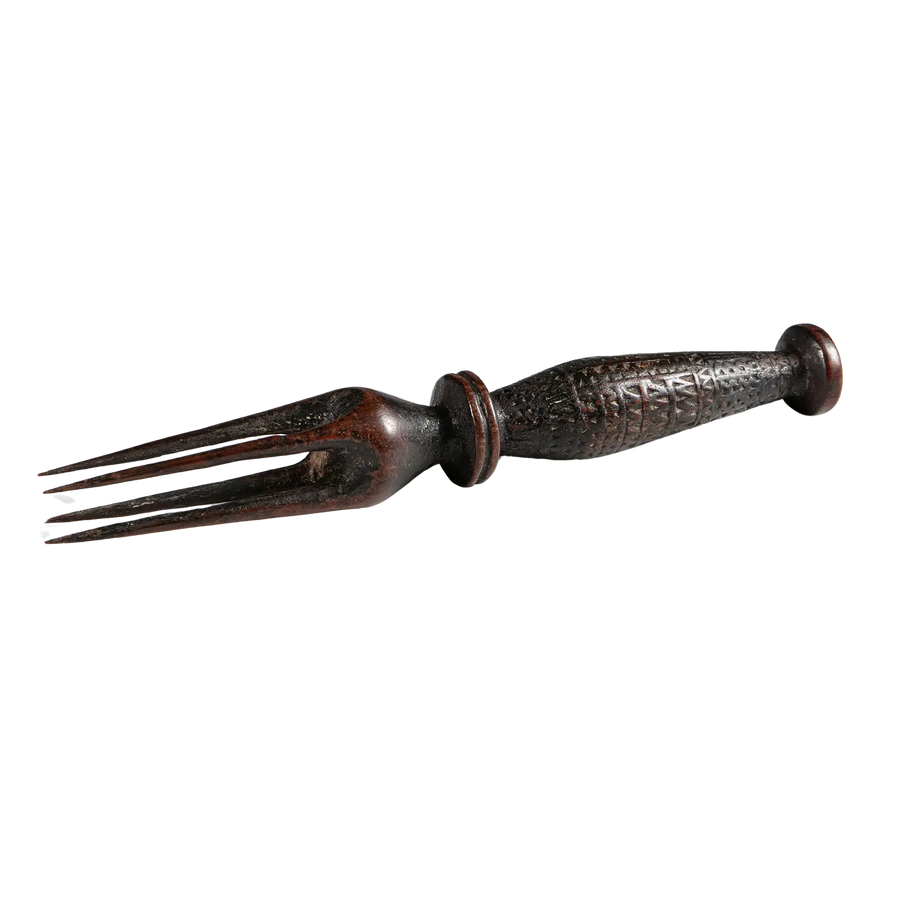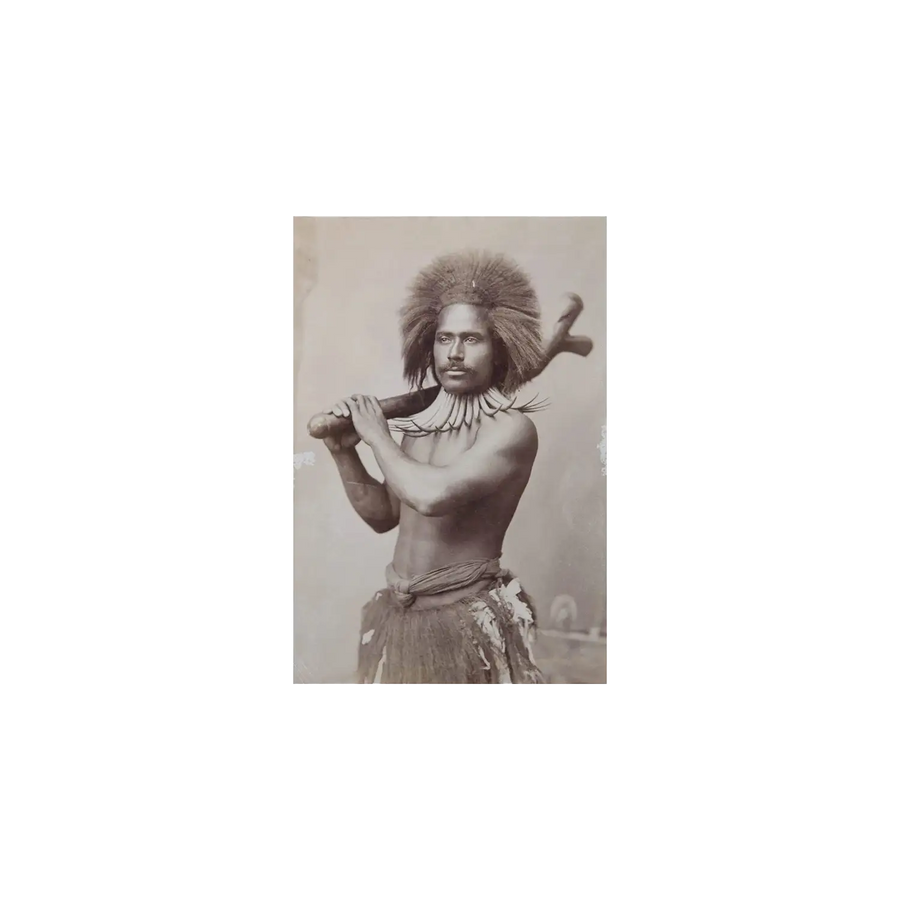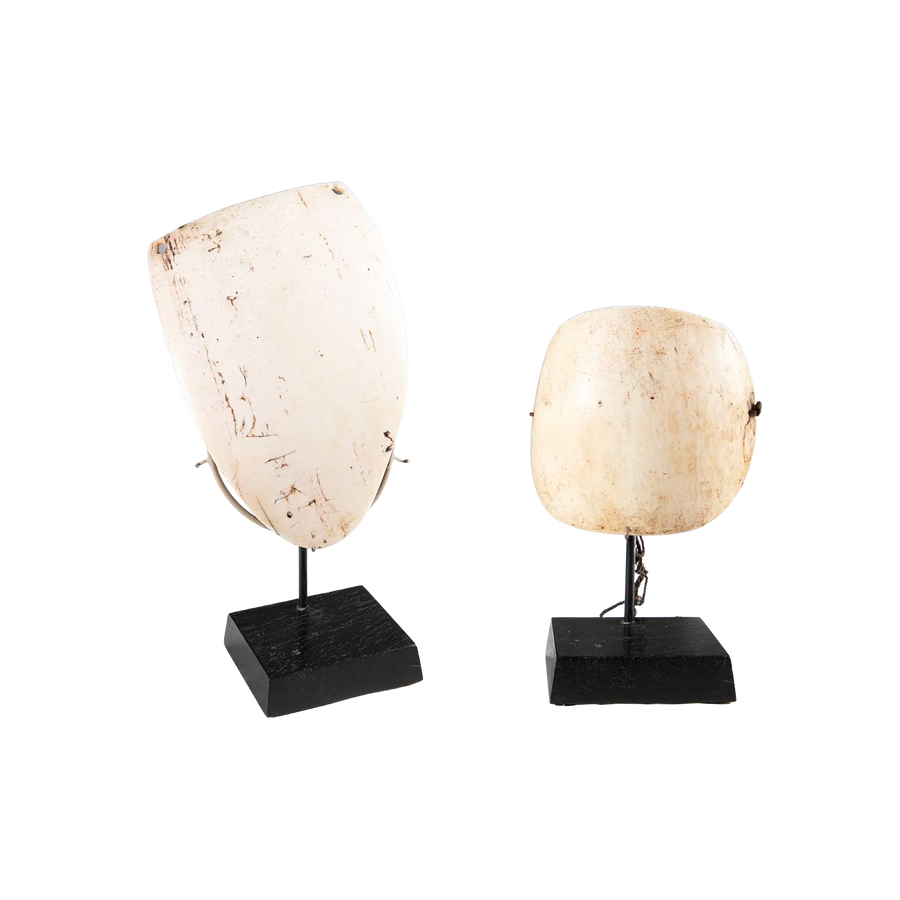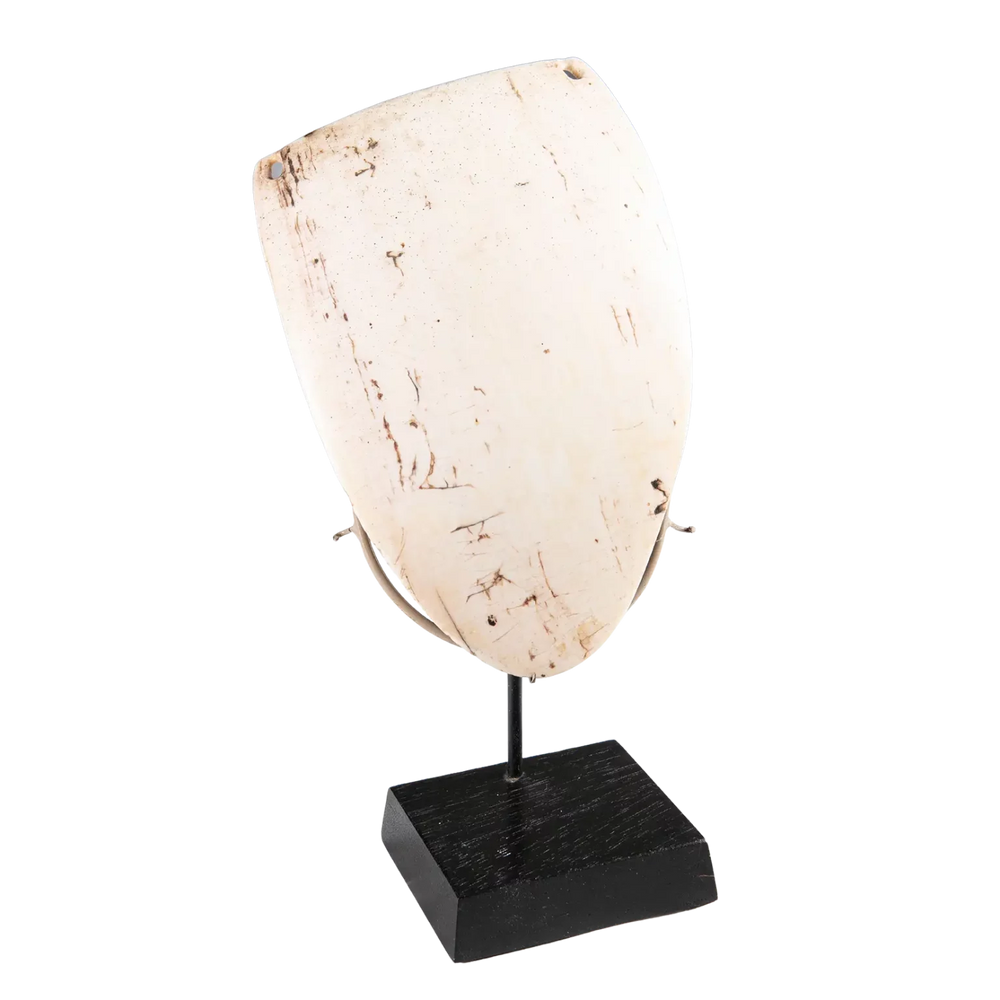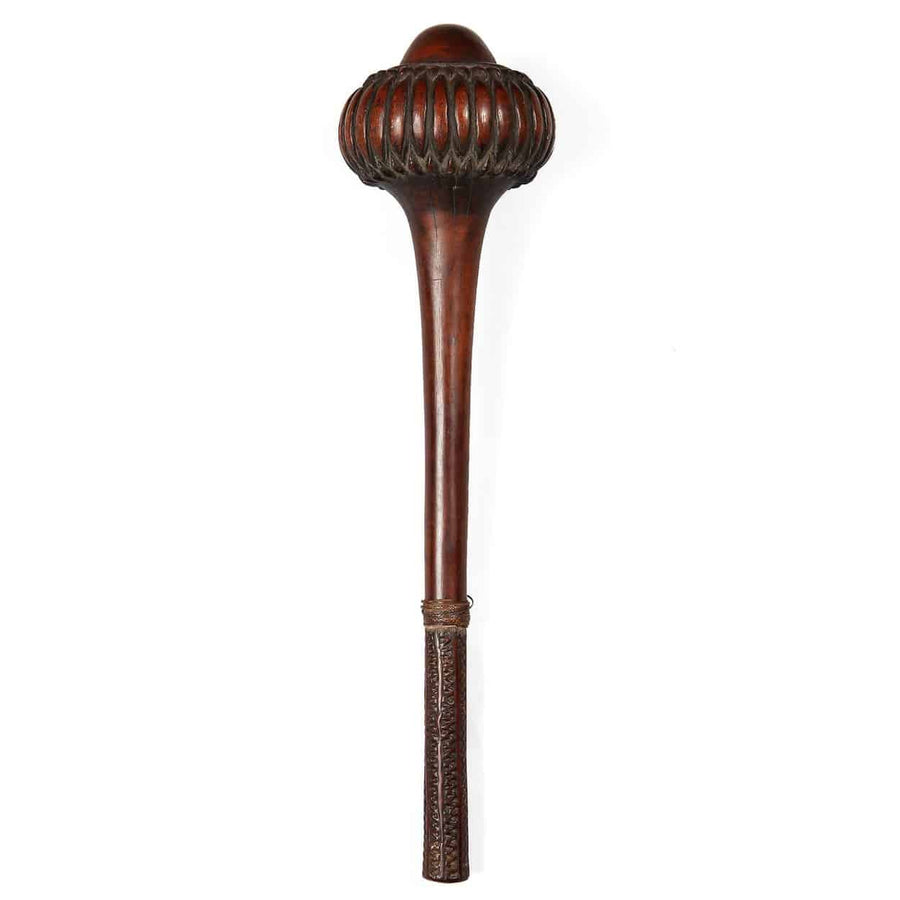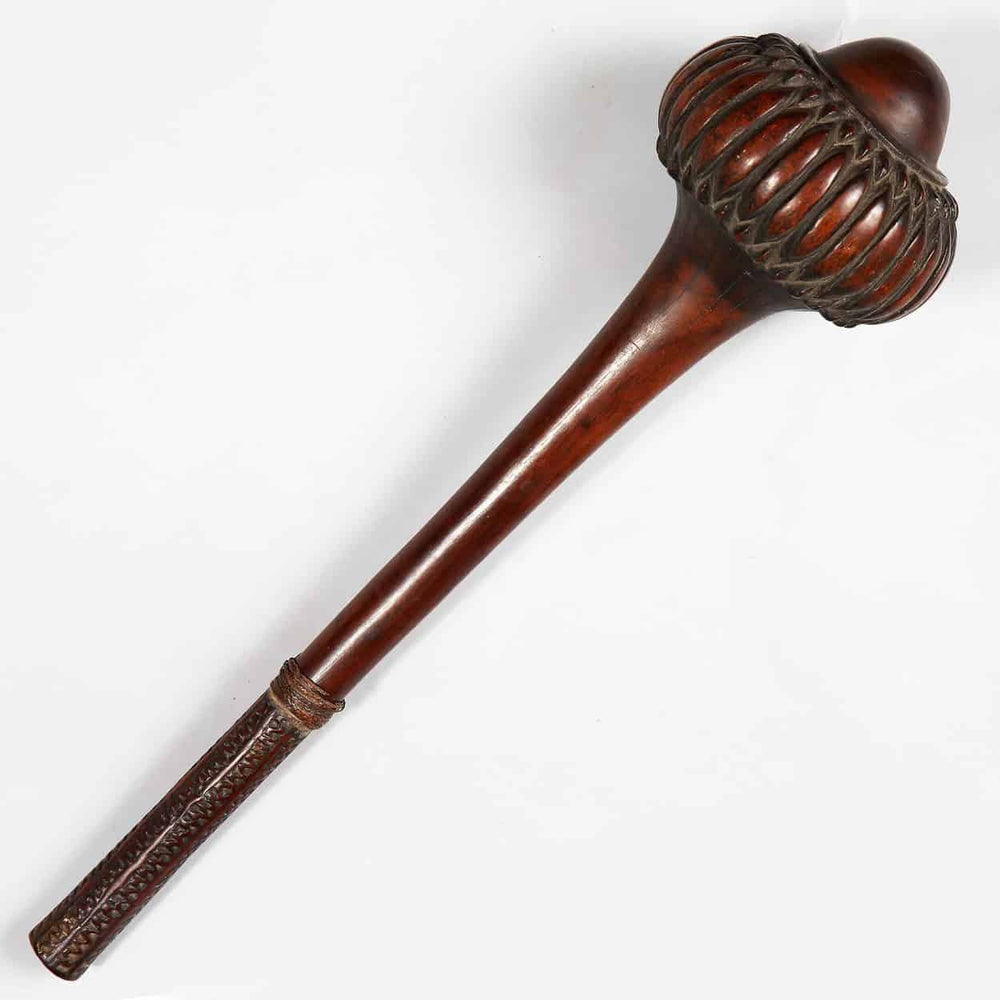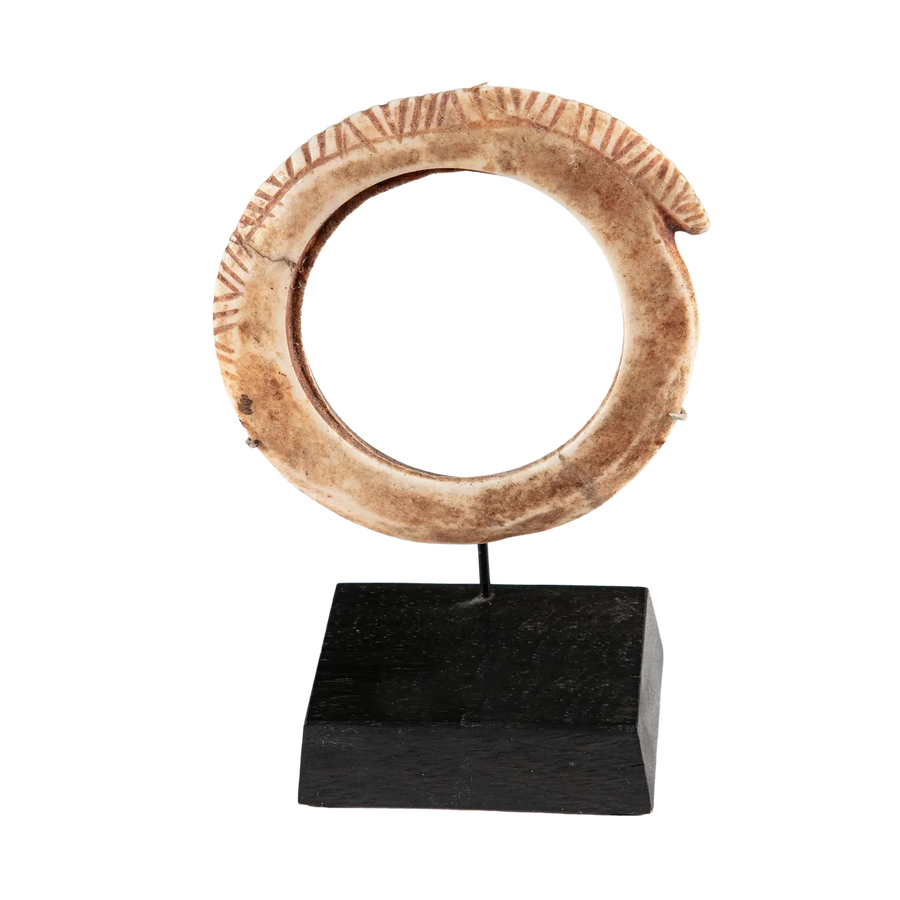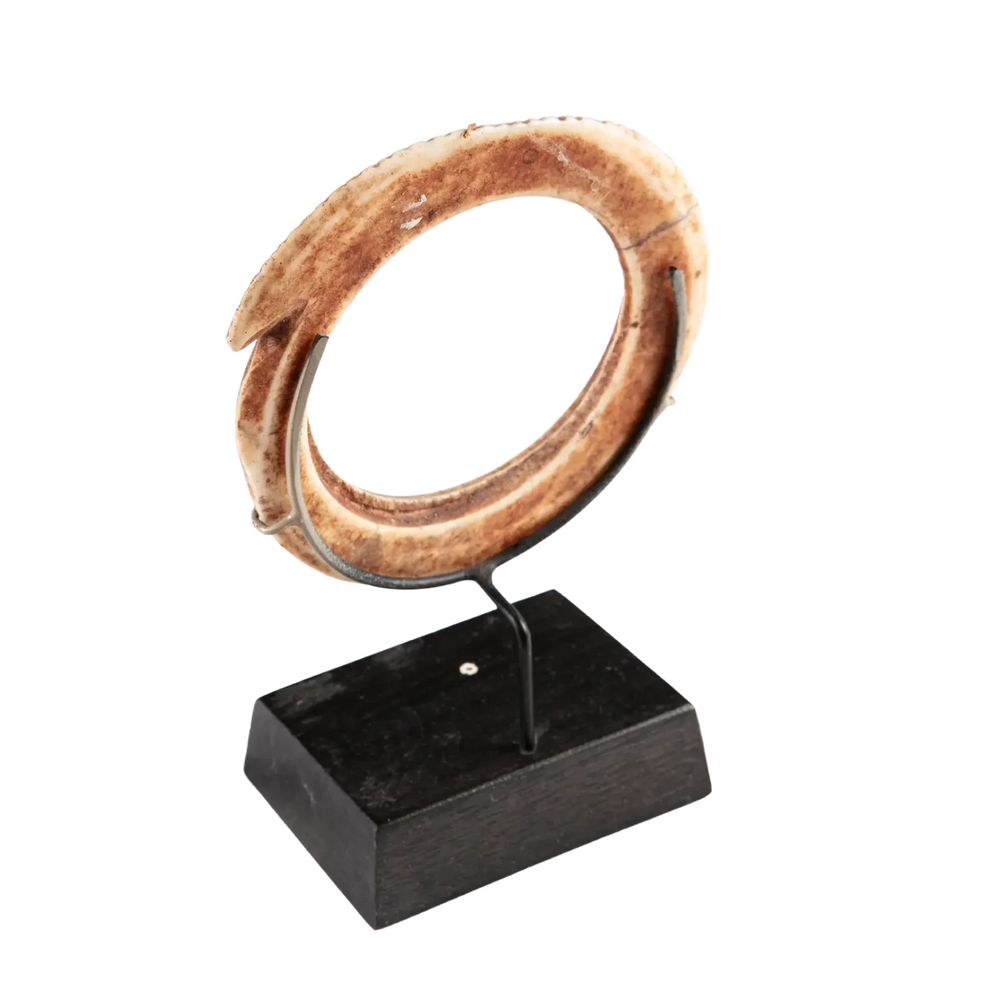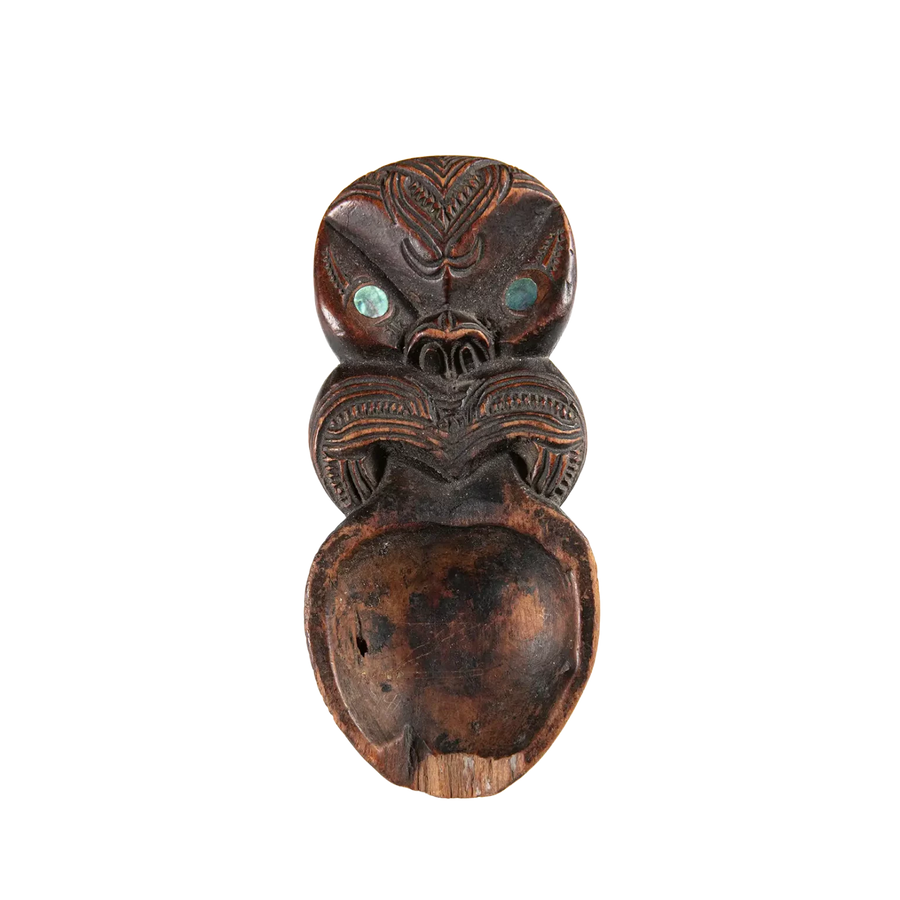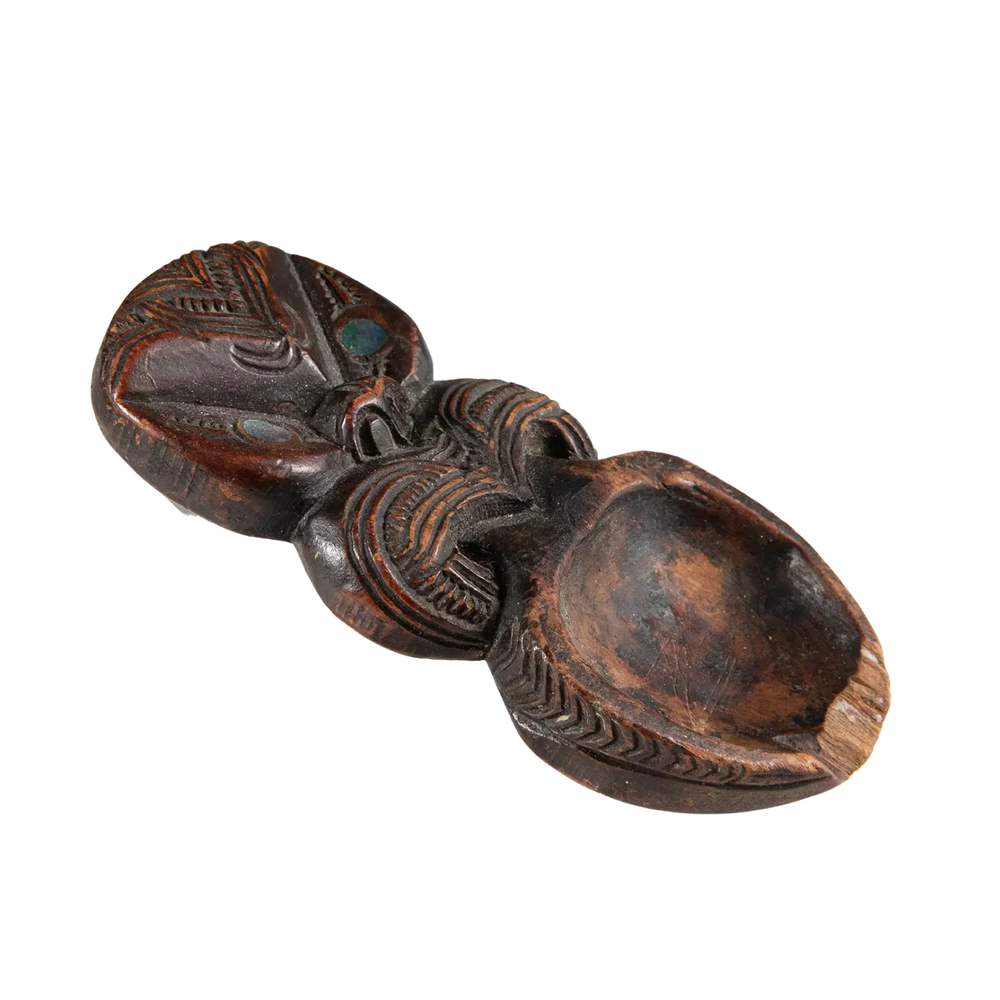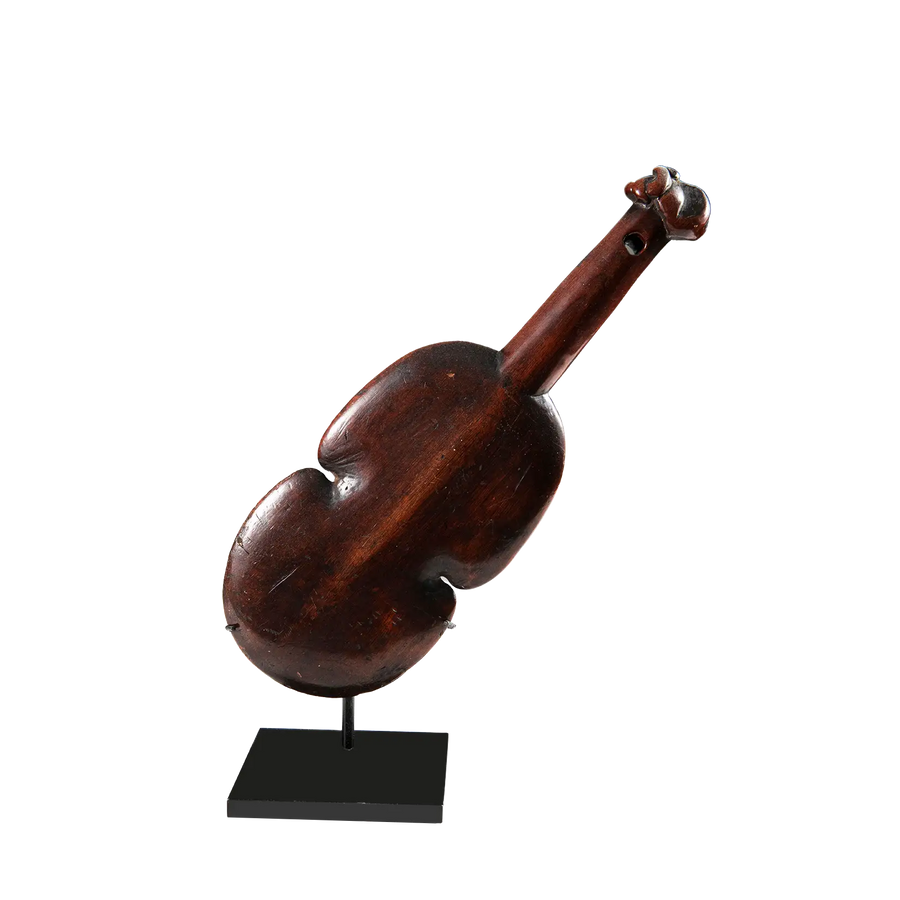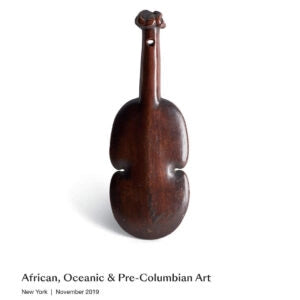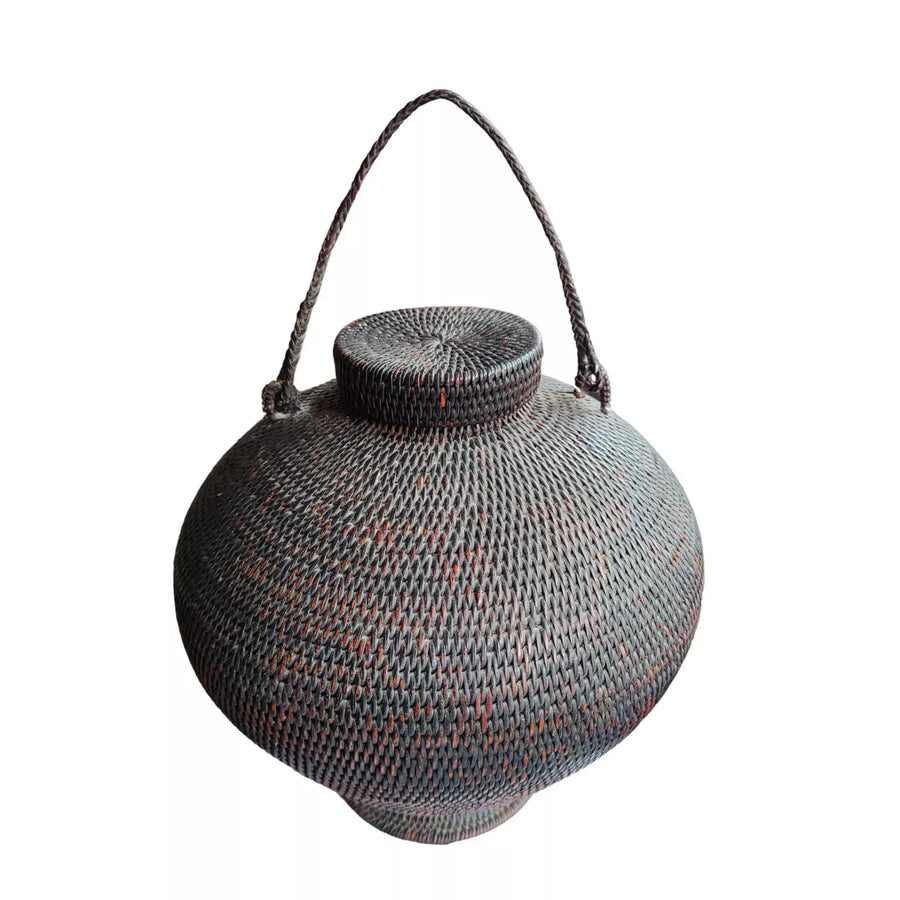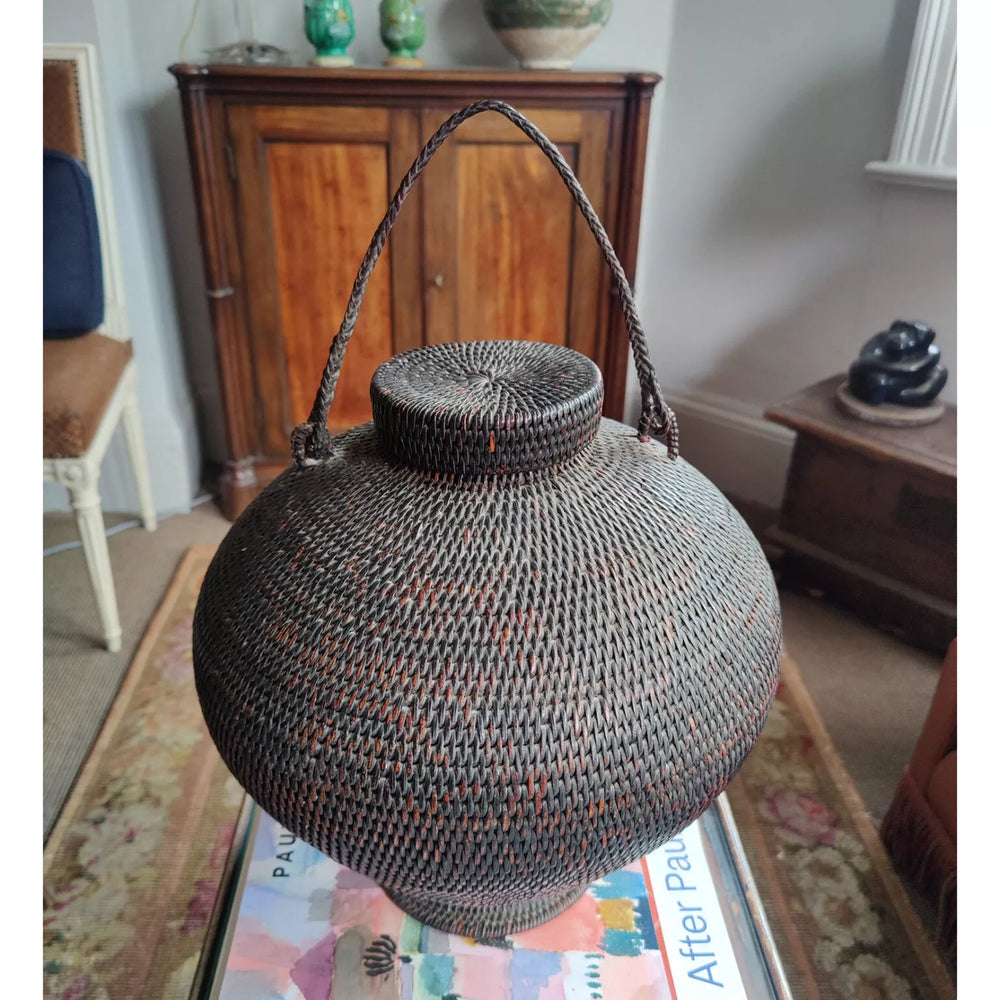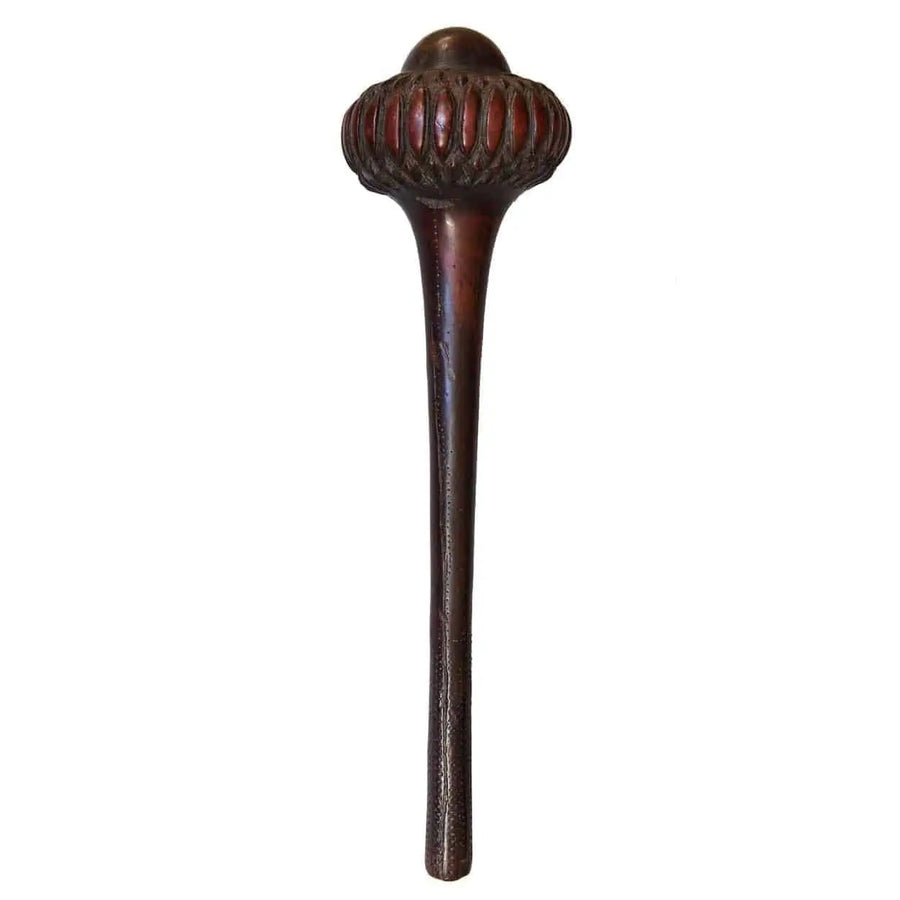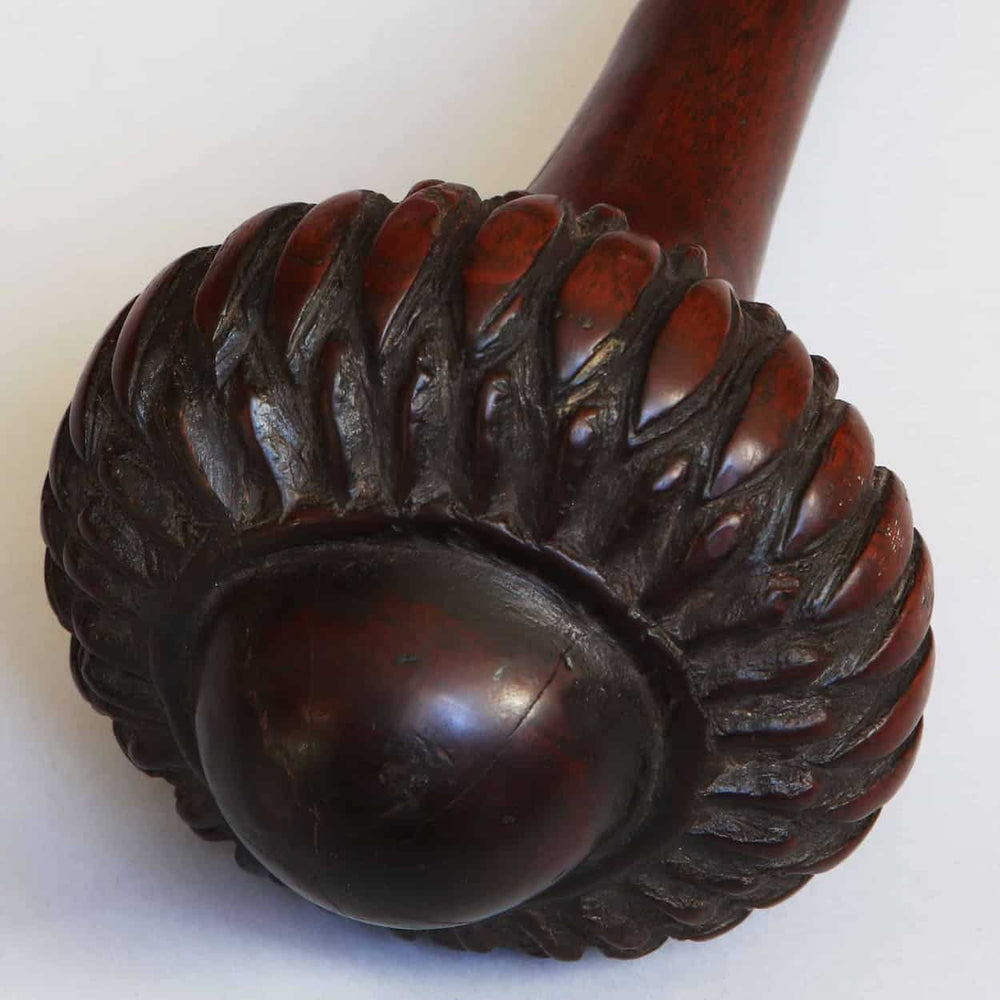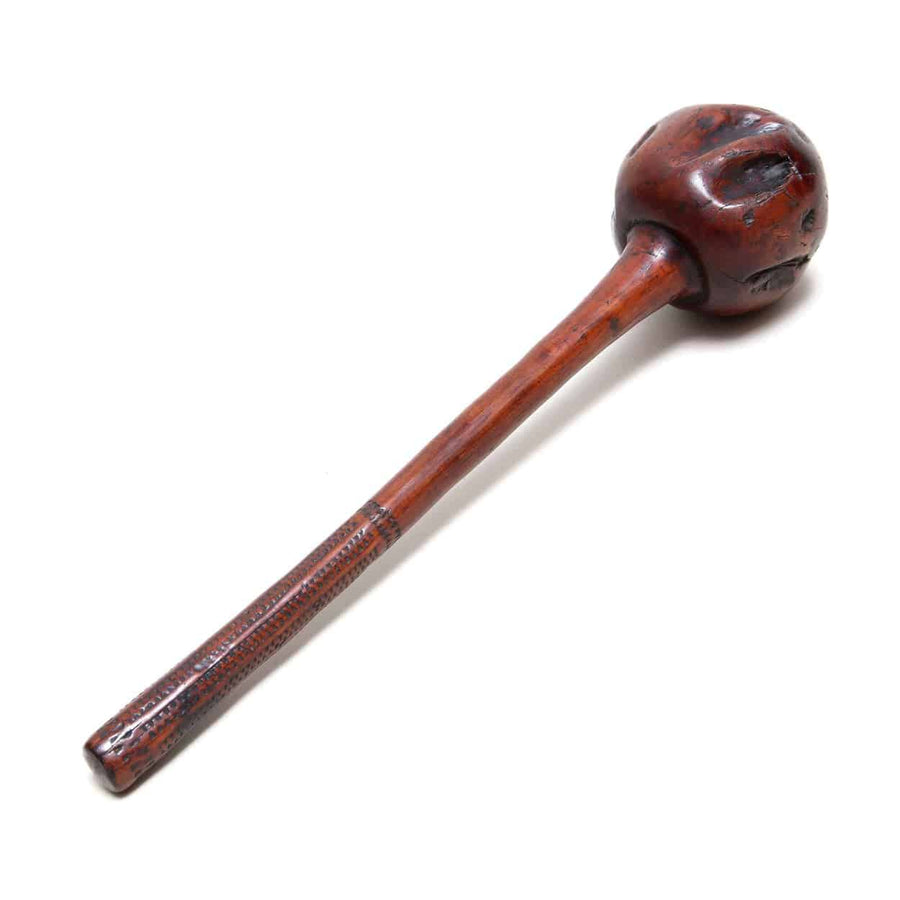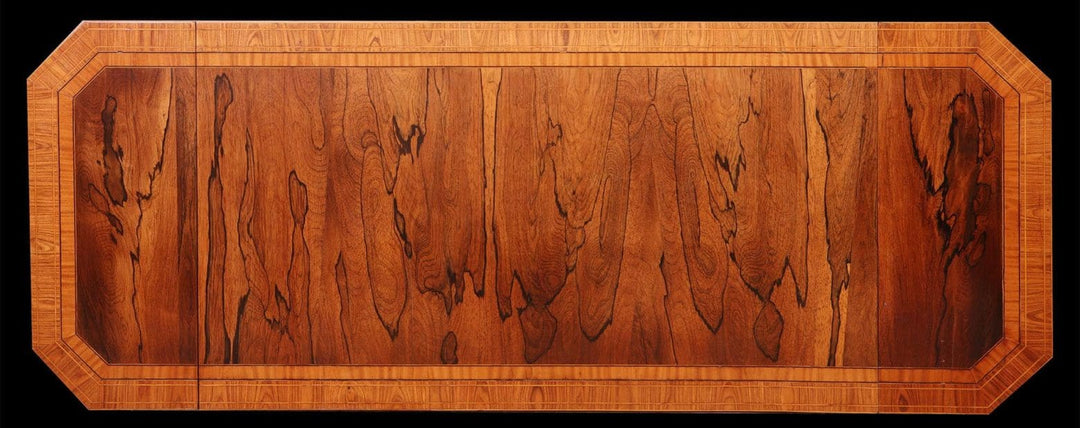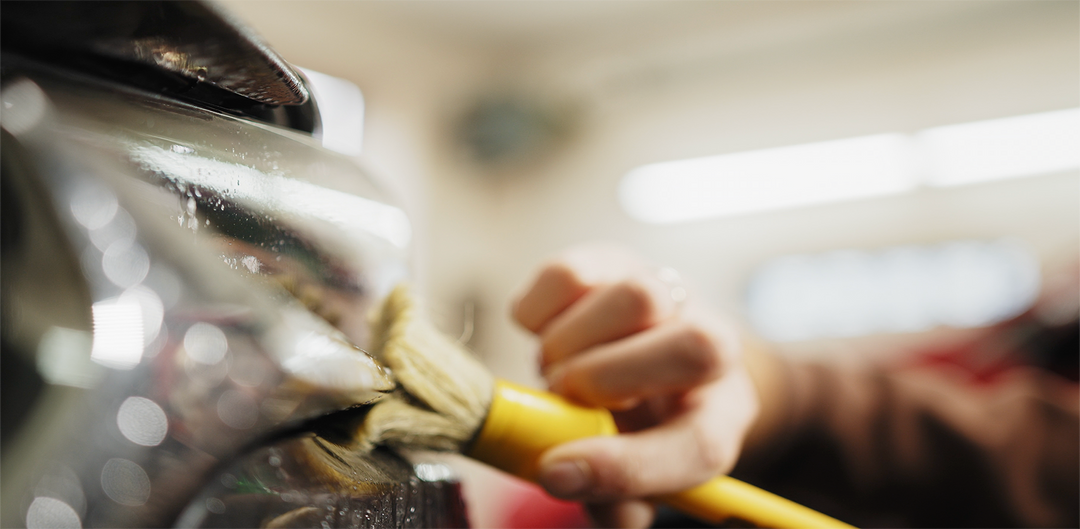
Prestige, Power & Ceremony from Oceania
The tribal art of Oceania carries with it the spirit of ritual, prestige, and ancestral tradition. From the islands of Fiji, Tonga, Samoa, and New Zealand, weapons and ceremonial objects were carved from the hardest timbers, shells, and natural fibres — materials imbued with cultural meaning. These works are not only artifacts of combat and ceremony, but also intricate expressions of artistry created long before the introduction of metal tools.
At Nicholas Wells Antiques, we are proud to present a carefully curated collection of Oceanic weapons and tribal objects, sourced from important private and historic collections. Each piece reflects a balance of practicality and symbolism: a war club both deadly and ceremonial; a cannibal fork that is at once tool and sacred object; a tattoo ink holder that carries centuries of cultural significance.
Highlights of the Collection
-
Tongan War Club – Monumental example of ironwood weaponry (£20,000).
-
Exceptional Native Tongan Ironwood War Club – Finely preserved ceremonial club (£17,500).
-
Fijian Paddle Club (Culacula) – A weapon of authority, powerfully carved (£4,250).
-
19th-Century Fijian Rootstock War Club – A rare and impressive survival (£1,450).
-
Lobed Fijian Ula Throwing Club – Known as the “assassin’s club of choice,” intricately detailed (£1,250).
-
Maori Taiaha Quarter-Staff Club – A revered weapon of New Zealand chiefs (POA).
-
Rare Tribal Cannibal Fork (Iculanibokola) – Ritual tool of extraordinary rarity (POA).
-
Maori Moka Tattoo Ink Holder – With pāua shell inlay, New Zealand, 19th century (POA).
-
Oceanic Tribal Shell Codpieces – Remarkable ethnographic survivals (POA).
Prices in this collection range from around £1,250 for throwing clubs to £20,000 for rare and ceremonial war clubs. Selected pieces of extraordinary rarity are available by request (POA).
Frequently Asked Questions (FAQ)
What types of Oceanic tribal art do you offer?
We specialise in ceremonial and combat weapons (clubs, patu, taiaha, ula), ritual objects (tattoo ink holders, cannibal forks, shell adornments), and personal artefacts such as headrests, armbands, and codpieces.
What materials were these objects made from?
Primarily vesi/ironwood, prized for its density and strength, as well as shells, bone, and woven fibres. Many weapons and objects are decorated with intricate patterns carved using shell tools before metalworking was introduced.
Were these objects functional or symbolic?
Both. Clubs, patu, and taiaha were effective in combat, but they were also deeply symbolic, often carried by chiefs and warriors as emblems of prestige and authority. Cannibal forks, tattoo trays, and ceremonial adornments were integral to ritual life.
Do you supply museums and institutions?
Yes. Our Oceanic works have been sourced and placed with private collectors and are of the quality sought by ethnographic museums. Many objects are rare survivals suitable for display or research.
How do Oceanic tribal objects suit modern interiors?
Their sculptural forms — from the bold silhouettes of war clubs to the minimalist beauty of carved headrests — integrate beautifully with modern design. These are works of art in their own right, carrying immense presence.
What is the price range?
Prices begin around £1,200 for smaller throwing clubs and rise to £20,000 for prestigious ceremonial weapons. Rare museum-quality pieces are available on a “Price on Application” basis.
Do you arrange shipping internationally?
Yes. We use fine art logistics specialists, ensuring secure, insured, and compliant transport of all ethnographic objects worldwide.
✨ Explore the Nicholas Wells Antiques Oceanic Tribal Art Collection – where ceremony, artistry, and cultural history converge in rare and powerful objects.




